Exhibition dates: 4th March – 28th May 2018
Sally Mann (American, b. 1951)
Was Ever Love
2009
Gelatin silver print
38.1 x 34.3cm (15 x 13 1/2 in.)
The Museum of Fine Arts, Houston, Museum purchase funded by the S.I. Morris Photography Endowment
© Sally Mann
“These are the places and things most of us drive by unseeing, scenes of Southern dejection we’d contemplate only if our car broke down and left us by the verdant roadside.”
Sally Mann
“Aurore’s conception of place had undergone a transformation on her return to Nohant from the Pyrenees. Her reflections on place were intimately bound up with a new perspective on identity, and this implicated others, both alive and dead. Her sense of fusedness with others involved a temporal complexity which, in its turn, was bound up with the notion of history. And historical events were soon to become very much a part of her life. Thus the timeless melancholy of a place outside history had become the urgent historical now. She was caught up in Nohant’s past, her past, and projecting the now into the future, she imagined what the now would look like with hindsight.”
Belinda Jack. George Sand: A Women’s Life Writ Large. London: Vintage, 2001, p. 155.
(Un)seeing: the quality of the affection … that has carved the trace in the mind
I did some research on the University of Melbourne library website on articles written on the work of Sally Mann. The titles included, What Remains: Sally Mann’s Encounter with Death and Wet Collodion (Lisa Wright, Afterimage 2004); The Disturbing Photography of Sally Mann (Richard Woodward, New York Times 1992); The camera of Sally Mann and the spaces of childhood (James Steward, Michigan Quarterly Review 2000); and Death and Memory in the Photography of Sally Mann (Mary Perkins, MA Thesis 2008). Everything you could possibly want to know is there. The passage of time and the transience of life. Time, memory and experience. Childhood, death and desire. Family, place and seeing.
Reviewing the book What Remains, my favourite body of work by Mann, Wright insightfully observes, “In her photographs Mann invokes fear, peace and continuing joy that make up existence and its inevitable demise… Lacking the ingredients of the grotesque, avoiding shock as a strategy to attract the viewer’s attention, her images are true inquisitions into the very nature of death and its effect on the living. Definitely and subtly combining content and form, Mann captures the horror and sublime beauty of what our western culture tends to carefully hide. The wet collodion process she utilises serves to strengthen the haunting and archaic beauty of her pictures, their eeriness, giving the impression that the very images themselves are subject to the same death and decay as their subjects.”
In the body of work What Remains this turns out to be the death of her pet greyhound and the bones that remain, the breakdown of the human body after death when she “photographed bodies that were in various states of decomposition on the grounds of a forensic study site”, the photographs of the Civil War battlefield of Antietam, contested ground which still makes the American South what it is today, and tightly-cropped portraits of her children in adolescence. As in all of Mann’s work, there is a quality of affection which carves a trace in the mind. Not affectation, nor affliction, but affection. It is a personal affection for something that she sees that others don’t. “These are the places and things most of us drive by unseeing…” which she acknowledges and offers to the viewer. Unseeing is defined as, not seeing; especially: not consciously observing, whereas I believe what Mann does is subconsciously recognise and feel and then consciously observe, hence (un)seeing.
In her photography in which the senses are fully engaged, there is a fusedness with the object of her affection, whether it be battlefields or bodies, rivers or recreation. In the biography of the writer and bohemian George Sand that I am reading at the moment, there is a wonderful quotation that I have posted above which I believe has relevance here; specifically, the notion of how the past, present and future time becomes conflated into an eternal present (something that photography does so well), and how past history and people still illuminate the present and the future. “Her reflections on place were intimately bound up with a new perspective on identity, and this implicated others, both alive and dead. Her sense of fusedness with others involved a temporal complexity which, in its turn, was bound up with the notion of history.”
Mann’s sense of fusedness with others, both alive and dead, leads to a temporal complexity bound up with the notion of history. How she iterates such concepts within her sensual photographs “with affection” is at the core of her art: the discontinuity of life in all its contexts, made eternal. What a simply breath—- taking artist.
Dr Marcus Bunyan
Many thankx to the National Gallery of Art for allowing me to publish the photographs in the posting. Please click on the photographs for a larger version of the image.
Sally Mann. “The First Letter,” from ‘Sally Mann: Correspondence with Melissa Harris’. Aperture 1995; 138, p. 124 [Online] Cited 25/05/2018
Sally Mann (American, b. 1951)
The Ditch
1987
Gelatin silver print
47.5 x 58cm (18 11/16 x 22 13/16 in.)
The Art Institute of Chicago, Gift of Sally Mann and Edwynn Houk Gallery, 2000.41
The Art Institute of Chicago / Art Resource, NY
© Sally Mann
Sally Mann (American, b. 1951)
Easter Dress
1986
Gelatin silver print
47 x 57.8cm (18 1/2 x 22 3/4 in.)
Patricia and David Schulte
© Sally Mann
Sally Mann (American, b. 1951)
Blowing Bubbles
1987
Gelatin silver print
High Museum of Art, Atlanta
Purchase with funds from Lucinda W. Bunnen for the Bunnen Collection
© Sally Mann
Gertrude Käsebier (American, 1852-1934)
Mother and Child
1899
The Art Institute of Chicago, Gift of Mina Turner
Mann often drew inspiration from earlier artists, including the pioneering early twentieth-century photographer Gertrude Käsebier, celebrated for powerful and tender pictures that convey the bonds between parents and children.
Wall text
Sally Mann (American, b. 1951)
Jessie Bites
1985
Gelatin silver print
Lent by The Metropolitan Museum of Art
© Sally Mann
Sally Mann (American, b. 1951)
The Last Time Emmett Modeled Nude
1987
Gelatin silver print
Addison Gallery of American Art, Phillips Academy, Andover, Massachusetts
© Sally Mann
Sally Mann (American, b. 1951)
Gorjus
1989
Gelatin silver print
Sayra and Neil Meyerhoff
© Sally Mann
Sally Mann (b. 1951)
Cherry Tomatoes
1991
Gelatin silver print
47.6 x 59cm (18 3/4 x 23 1/4 in.)
National Gallery of Art, Washington, Corcoran Collection
Gift of David M. Malcolm in memory of Peter T. Malcolm
© Sally Mann
Sally Mann (American, b. 1951)
Emmett floating at Camp
1991
Private collection
© Sally Mann
Sally Mann (American, born 1951)
Bloody Nose
1991
Silver dye bleach print
Private collection
Sally Mann (American, born 1951)
Bean’s Bottom
1991
Silver dye bleach print
Private collection
Sally Mann (American, b. 1951)
On the Maury
1992
Gelatin silver print
25.4 x 20.3cm (10 x 8 in.)
Private collection
© Sally Mann
Sally Mann (American, b. 1951)
Virginia, Untitled (Blue Hills)
1993, printed 1997
Gelatin silver print
77.5 x 97.8cm (30 1/2 x 38 1/2 in.)
Lent by The Metropolitan Museum of Art, Purchase, The Horace W. Goldsmith Foundation Gift, through Joyce and Robert Menschel, 1998 (1998.49)
© The Metropolitan Museum of Art / Art Resource, NY
© Sally Mann
Gustave Le Gray (French, 1820-1884)
Beech Tree, Forest of Fontainbleau
c. 1856
National Gallery of Art, Washington, Patrons’ Permanent Fund
Sally Mann (American, b. 1951)
Deep South, Untitled (Scarred Tree)
1998
Gelatin silver print
96.5 x 121.9cm (38 x 48 in.)
National Gallery of Art, Washington, Alfred H. Moses and Fern M. Schad Fund
© Sally Mann
Sally Mann (American, b. 1951)
Deep South, Untitled (Fontainebleau)
1998, printed 2017
Gelatin silver print
94.9 x 120cm (37 3/8 x 47 1/4 in.)
National Gallery of Art, Washington, Promised Gift of Stephen G. Stein Employee Benefit Trust
© Sally Mann
Sally Mann (American, b. 1951)
Deep South, Untitled (Three Drips)
1998, printed 1999
Gelatin silver print
96.4 x 120.3cm (37 15/16 x 47 3/8 in.)
National Gallery of Art, Washington, Gift of the Collectors Committee and The Sarah and William L Walton Fund
© Sally Mann
Sally Mann (American, b. 1951)
Deep South, Untitled (Valentine Windsor)
1998
Gelatin silver print
Virginia Museum of Fine Arts, Richmond
Gift of the Massey Charitable Trust
© Sally Mann
Sally Mann (American, b. 1951)
Deep South, Untitled (Stick)
1998
Gelatin silver print, printed 1999
Courtesy of the New Orleans Museum of Art: Collection of H. Russell Albright, M.D.
© Sally Mann
Sally Mann (American, b. 1951)
Deep South, Untitled (Bridge on Tallahatchie)
1998
Gelatin silver print
93.98 x 120.65cm (37 x 47 1/2 in.)
Markel Corporate Art Collection
© Sally Mann
Sally Mann (American, b. 1951)
Deep South, Untitled (Emmett Till River Bank)
1998
Gelatin silver print
Peabody Essex Museum, Salem, Massachusetts
© Sally Mann
For more than 40 years, Sally Mann (b. 1951) has made experimental, elegiac, and hauntingly beautiful photographs that explore the overarching themes of existence: memory, desire, death, the bonds of family, and nature’s magisterial indifference to human endeavour. What unites this broad body of work – figure studies, landscapes, and architectural views – is that it is all bred of a place, the American South. Using her deep love of her homeland and her knowledge of its historically fraught heritage, Mann asks powerful, provocative questions – about history, identity, race, and religion – that reverberate across geographic and national boundaries.
Sally Mann: A Thousand Crossings, the first major survey of this celebrated artist to travel internationally, investigates how Mann’s relationship with her native land – a place rich in literary and artistic traditions but troubled by history – has shaped her work. The exhibition brings together 109 photographs, many exhibited for the first time. On view in the West Building of the National Gallery of Art, Washington, from March 4 through May 28, 2018, the exhibition is accompanied by a fully illustrated catalog, presenting an in-depth exploration of the evolution of Mann’s art, and a short film highlighting her technical process.
“In her compelling photographs, Mann uses the personal to allude to the universal, considering intimate questions of family, memory, and death while also evoking larger concerns about the influence of the South’s past on its present,” said Earl A. Powell III, director, National Gallery of Art, Washington. “With the acquisition of works from the Corcoran Gallery of Art in 2014, the National Gallery is now one of the largest repositories of Mann’s photographs. We are grateful for the opportunity to work closely with the artist in presenting a wide selection of the work she has created over four decades. ”
Exhibition Highlights
The seeds for Sally Mann: A Thousand Crossings were planted in 2014, when National Gallery of Art curators undertook a review of photographs from the Corcoran Gallery of Art after its collections were placed under the stewardship of the National Gallery. Among the Corcoran’s works were 25 photographs by Sally Mann, made from the mid-1970s to the early 2000s. With the addition of these works, plus several more acquired through purchase, the National Gallery became one of the largest public repositories of Mann’s photographs in the country. The curators’ interest in mounting an exhibition of Mann’s art deepened when they realised that despite her immense talent and prominence, the full range of Mann’s work had not yet received sufficient and widespread scholarly and critical attention.
Sally Mann: A Thousand Crossings is organised into five sections – Family, The Land, Last Measure, Abide with Me, and What Remains. The exhibition opens with works from the 1980s, when Mann began to photograph her three children at the family’s remote summer cabin on the Maury River near Lexington, Virginia. Taken with an 8 x 10 inch view camera, the family pictures refute the stereotypes of childhood, offering instead unsettling visions of its complexity. Rooted in the experience of a particular natural environment – the arcadian woodlands, rocky cliffs, and languid rivers – these works convey the inextricable link between the family and their land, and the sanctuary and freedom that it provided them.
The exhibition continues in The Land with photographs of the swamplands, fields, and ruined estates Mann encountered as she traveled across Virginia, Georgia, Louisiana, and Mississippi in the 1990s. Hoping to capture what she called the “radical light of the American South,” Mann made pictures in Virginia that glow with a tremulous light, while those made in Georgia and Mississippi are more blasted and bleak. In these photographs, Mann was also experimenting with antique lenses and the 19th-century collodion wet plate process and printing in a much larger size (30 x 38 and 40 x 50 inches). The resulting photographic effects, including light flares, vignetting, blurs, streaks and scratches, serve as metaphors for the South as a site of memory, defeat, ruin, and rebirth. Mann then used these same techniques for her photographs of Civil War battlefields in the exhibition’s third section, Last Measure. These brooding and elusive pictures evoke the land as history’s graveyard, silently absorbing the blood and bones of the many thousands who perished in battles such as Antietam, Appomattox, Chancellorsville, Cold Harbor, Fredericksburg, Manassas, Spotsylvania, and the Wilderness.
The fourth section, Abide with Me, merges four series of photographs to explore how race and history shaped the landscape of Virginia as well as Mann’s own childhood and adolescence. Expanding her understanding of the land as not only a vessel for memory but also a story of struggle and survival, Mann made a series of starkly beautiful tintypes between 2006 and 2015 in the Great Dismal Swamp – home to many fugitive slaves in the years before the Civil War – and along nearby rivers in southeastern Virginia where Nat Turner led a rebellion of enslaved people on August 21, 1831. Here, Mann’s use of the tintype process – essentially a collodion negative on a sheet of darkened tin – yields a rich, liquid-like surface with deep blacks that mirror the bracken swamp and rivers. Merging her techniques with metaphoric possibilities, she conveyed the region’s dual history as the site of slavery and death but also freedom and sanctuary. Mann also photographed numerous 19th-century African American churches near her home in Lexington. Founded in the decades immediately after the Civil War when African Americans in Virginia could worship without the presence of a white minister for the first time, these humble but richly evocative churches seem alive with the spirit that inspired their creation and the memories of those who prayed there.
Also included in Abide with Me are photographs of Virginia “Gee-Gee” Carter, the African American woman who worked for Mann’s family for 50 years. A defining and beloved presence in Mann’s life, Carter was also the person who taught Mann the profoundly complicated and charged nature of race relations in the South. The final component of this section is a group of pictures of African American men rendered in large prints (50 x 40 inches) made from collodion negatives. Representing Mann’s desire to reach across “the seemingly untraversable chasm of race in the American South,” these beautiful but provocative photographs examine an “abstract gesture heated up in the crucible of our association,” as Bill T. Jones, who in part inspired the series, once said.
The final section of the exhibition, What Remains, explores themes of time, transformation, and death through photographs of Mann and her family. Her enduring fascination with decay and the body’s vulnerability to the ravages of time is evident in a series of spectral portraits of her children’s faces and intimate photographs detailing the changing body of her husband Larry, who suffers from muscular dystrophy. The exhibition closes with several riveting self-portraits Mann made in the wake of a grave riding accident. Here, her links to southern literature and her preoccupation with decay are in full evidence: the pitted, scratched, ravaged, and cloudy surfaces of the ambrotypes function as analogues for the body’s corrosion and death. The impression of the series as a whole is of an artist confronting her own mortality with composure and conviction.
Sally Mann
Born in 1951 in Lexington, Virginia, Sally Mann continues to live and work in Rockbridge County. Mann developed her first roll of film in 1969 and began to work as a professional photographer in 1972. She attended Bennington College, Vermont, and graduated in 1974 with a BA in literature from Hollins College, Roanoke, Virginia where she earned an MA in creative writing the following year. She has exhibited widely and published her photographs in the books Second Sight: The Photographs of Sally Mann (1983), Sweet Silent Thought: Platinum Prints by Sally Mann (1987), At Twelve: Portraits of Young Women (1988), Immediate Family (1992), Still Time (1994), Mother Land: Recent Landscapes of Georgia and Virginia (1997), What Remains (2003), Deep South (2005), Sally Mann: Photographs and Poetry (2005), Proud Flesh (2009), Sally Mann: The Flesh and the Spirit (2010), and Remembered Light: Cy Twombly in Lexington (2016). Mann’s best selling memoir, Hold Still: A Memoir with Photographs (2015), was a finalist for the National Book Award. She has received numerous honours as well as grants from the National Endowment for the Arts, the National Endowment for the Humanities, and the Guggenheim Foundation. In 2011 Mann delivered the prestigious William E. Massey Sr. Lectures in the History of American Civilization at Harvard University.
Sally Mann (American, b. 1951)
Battlefields, Antietam (Cornfield)
2001
Gelatin silver print
97.16 x 122.87cm (38 1/4 x 48 3/8 in.)
Virginia Museum of Fine Arts, Richmond, The National Endowment for the Arts Fund for American Art
Virginia Museum of Fine Arts
© Sally Mann
Sally Mann (b. 1951)
Battlefields, Fredericksburg (Cedar Trees)
2001, printed 2003
Gelatin silver print
97.8 x 123.2cm (38 1/2 x 48 1/2 in.)
Waterman/Kislinger Family
© Sally Mann
To achieve the textural, almost gritty appearance of her battlefield photographs, Mann coated the surface with a varnish mixed with diatomaceous earth – the fossilised remains of tiny marine creatures.
Wall text
Sally Mann (American, b. 1951)
Battlefields, Antietam (Black Sun)
2001
Gelatin silver print
Courtesy of Edwynn Houk Gallery, New York
© Sally Mann
Sally Mann (American, b. 1951)
Battlefields, Antietam (Starry Night)
2001
Gelatin silver print
96.52 x 122.56cm (38 x 48 1/4 in.)
Alan Kirshner and Deborah Mihaloff Art Collection
© Sally Mann
Sally Mann (American, b. 1951)
Battlefields, Cold Harbor (Battle)
2003
Gelatin silver print
99.1 x 124.5cm (39 x 49 in.)
National Gallery of Art, Washington, Gift of the Collectors Committee and The Sarah and William L Walton Fund
© Sally Mann
Sally Mann (American, b. 1951)
Battlefields, Antietam (Trenches)
2001
gelatin silver print
96.8 x 122.6cm (38 1/8 x 48 1/4 in.)
National Gallery of Art, Washington, Promised Gift of Stephen G. Stein Employee Benefit Trust
© Sally Mann
Sally Mann (American, b. 1951)
First Baptist Church of Goshen, St. Paul United Methodist
2008-2016
Gelatin silver print
Collection of the artist
© Sally Mann
Located twenty miles north of Lexington, the First Baptist Church of Goshen is now abandoned.
Sally Mann (American, b. 1951)
St. Paul African Methodist Episcopal
2008-2016
Gelatin silver print
Collection of the artist
© Sally Mann
Sally Mann (American, b. 1951)
Oak Hill Baptist, Mt. Tabor United Methodist
2008-2016
Gelatin silver print
Collection of the artist
© Sally Mann
Founded in the late 1870s or early 1880s, Oak Hill Baptist Church in Middlebrook, Virginia, remains active today. Mt. Tabor United Methodist Church nestles near the edge of Round Hill, a traditionally African American community in New Hope, Virginia. It replaced a log structure built prior to 1850. Here, the church appears as an apparition, an effect achieved by overexposing the negative.
Wall text
Sally Mann (American, born 1951)
Beulah Baptist 01:01
2008-2016
Gelatin silver print
Collection of the artist
© Sally Mann
Sally Mann (American, b. 1951)
The Two Virginias #4
1991
Gelatin silver print
Collection of The Estée Lauder Companies Inc.
© Sally Mann
Sally Mann (American, b. 1951)
Blackwater 9
2008-2012
Tintype
Plate: 38.1 x 34.3cm (15 x 13 1/2 in.)
Collection of the artist
© Sally Mann
Sally Mann (American, b. 1951)
Blackwater 20
2008-2012
Tintype
Plate: 38.1 x 34.3cm (15 x 13 1/2 in.)
Collection of the artist
© Sally Mann
Sally Mann (American, b. 1951)
Blackwater 25
2008-2012
Tintype
Plate: 38.1 x 34.3cm (15 x 13 1/2 in.)
Collection of the artist
© Sally Mann
Sally Mann (American, b. 1951)
Blackwater 3
2008-2012
tintype
Plate: 38.1 x 34.3cm (15 x 13 1/2 in.)
Collection of the artist
Image © Sally Mann
Sally Mann (American, b. 1951)
Blackwater 17
2008-2012
Tintype
Plate: 38.1 x 34.3cm (15 x 13 1/2 in.)
Collection of the artist
© Sally Mann
Sally Mann (American, b. 1951)
The Turn
2005
Gelatin silver print
Private collection
© Sally Mann
Sally Mann (American, b. 1951)
Semaphore
2003
Gelatin silver print
38.1 x 34.3cm (15 x 13 1/2 in.)
The Museum of Fine Arts, Houston, Museum purchase, 2010.264
© Sally Mann
Sally Mann (American, b. 1951)
Hephaestus
2008
Gelatin silver print
38.1 x 34.3cm (15 x 13 1/2 in.)
Virginia Museum of Fine Arts, Richmond, Kathleen Boone Samuels Memorial Fund
Virginia Museum of Fine Arts
© Sally Mann
Sally Mann (American, b. 1951)
Ponder Heart
2009
Gelatin silver print
38.1 x 34.3cm (15 x 13 1/2 in.)
National Gallery of Art, Washington, Alfred H. Moses and Fern M. Schad Fund
© Sally Mann
Sally Mann (American, b. 1951)
Speak, Memory
2008
Gelatin silver print
38.1 x 34.3cm (15 x 13 1/2 in.)
Courtesy Gagosian
© Sally Mann
Here Mann referenced Vladimir Nabokov’s autobiography Speak, Memory, which addresses memory’s changeability over time and life’s fleeting nature: “The cradle rocks above an abyss, and common sense tells us that our existence is but a brief crack of light between two eternities of darkness.”
Wall text
Sally Mann (American, b. 1951)
The Quality of the Affection
2006
Gelatin silver print
38.1 x 34.3cm (15 x 13 1/2 in.)
Private collection
© Sally Mann
The title of this photograph of Mann’s husband, Larry, is drawn from Ezra Pound’s Cantos, a long, ambitious poem that Mann explored in her 1975 master’s thesis in creative writing. Reflecting on time, memory and experience, Pound concluded:
nothing matters but the quality
of the affection –
in the end – that has carved the trace in the mind
Sally Mann (American, b. 1951)
Memory’s Truth
2008
Gelatin silver print
Courtesy Gagosian
© Sally Mann
Mann took the title from Salman Rushdie’s Midnight Children, which asserts that memory has its own kind of truth: “It selects, eliminates, alters, exaggerates, minimizes, glorifies, and vilifies also; but in the end it creates its own reality.”
Wall text
Sally Mann (American, born 1951)
Triptych
2004
3 gelatin silver prints
The Sir Elton John Photography Collection
© Sally Mann
Ethereal and indistinct, receding and dissolving, these larger-then-life faces express Mann’s long-standing fascination with the fragility of physical presence.
Wall text
Sally Mann (American, b. 1951)
Jessie #25
2004
Gelatin silver print
Courtesy of Edwynn Houk Gallery, New York
© Sally Mann
Sally Mann (American, born 1951)
Virginia #6
2004
Gelatin silver print
Courtesy of Edwynn Houk Gallery, New York
© Sally Mann
National Gallery of Art
National Mall between 3rd and 7th Streets
Constitution Avenue NW, Washington
Opening hours:
Monday – Saturday 10.00am – 5.00pm
Sunday 11.00am – 6.00pm

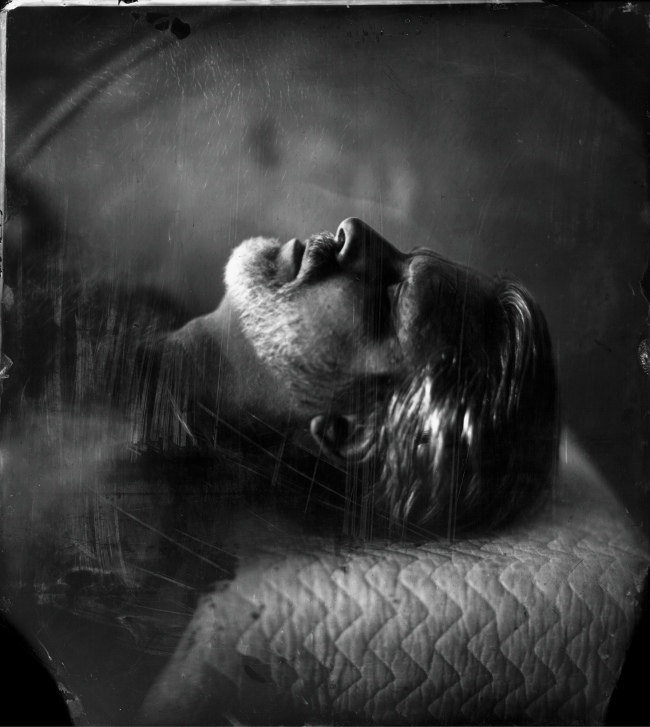


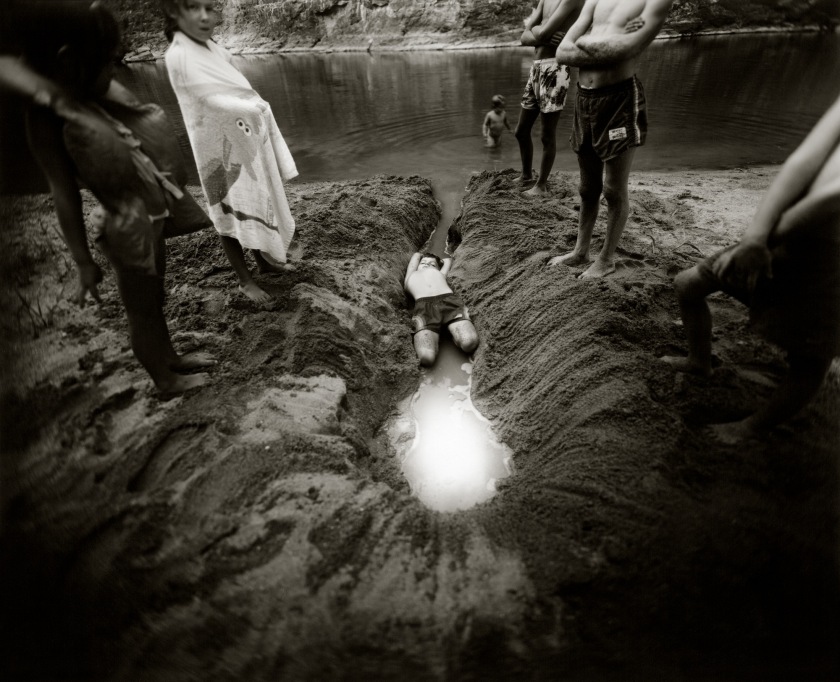


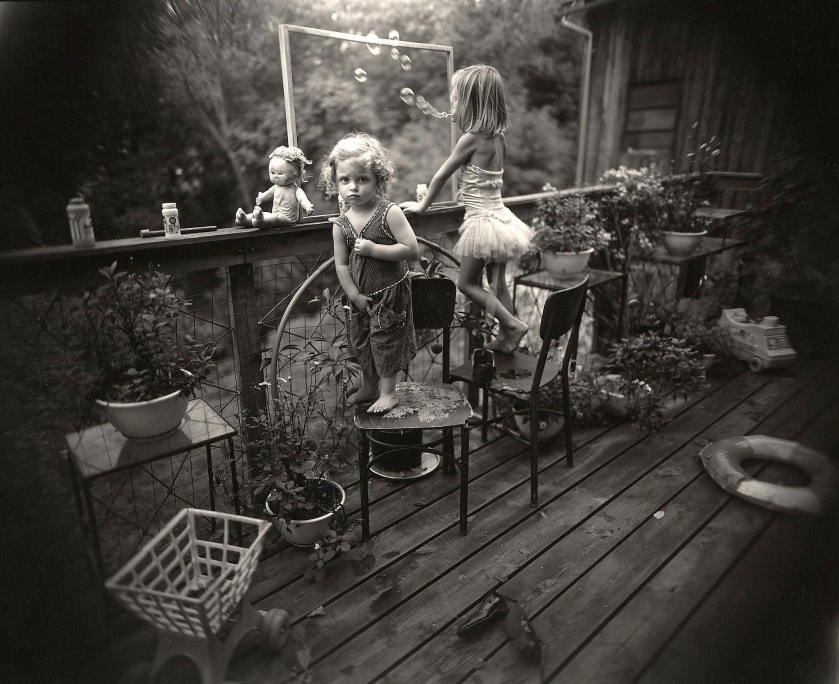


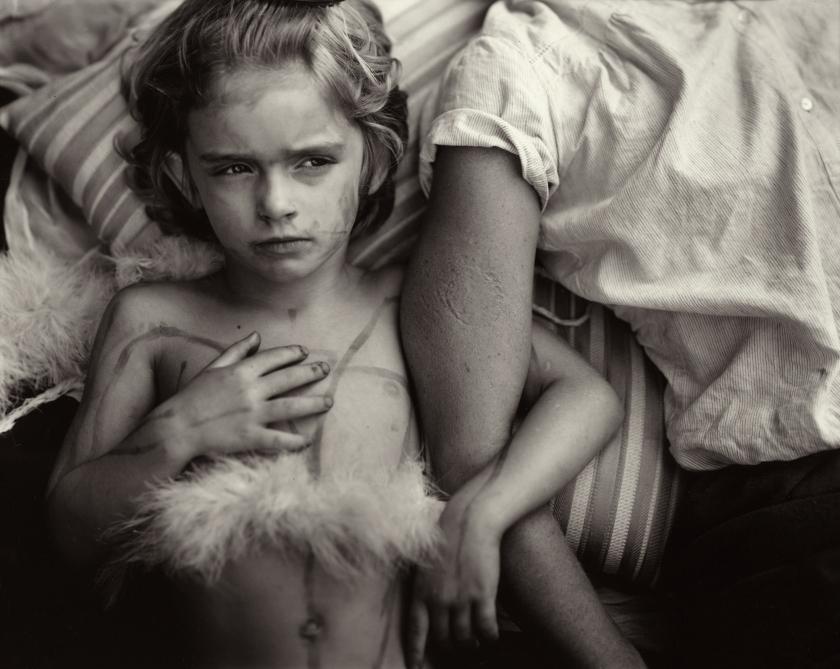

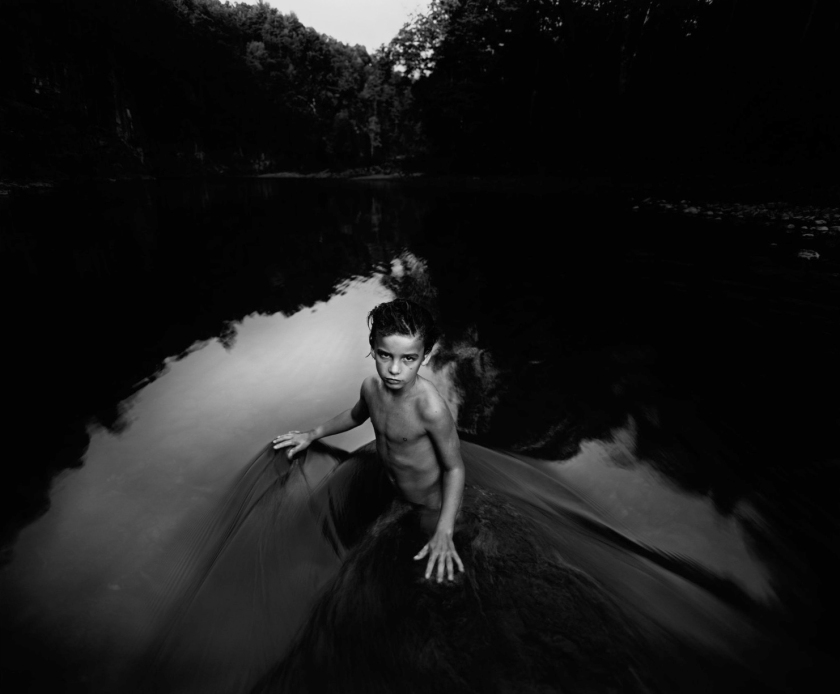
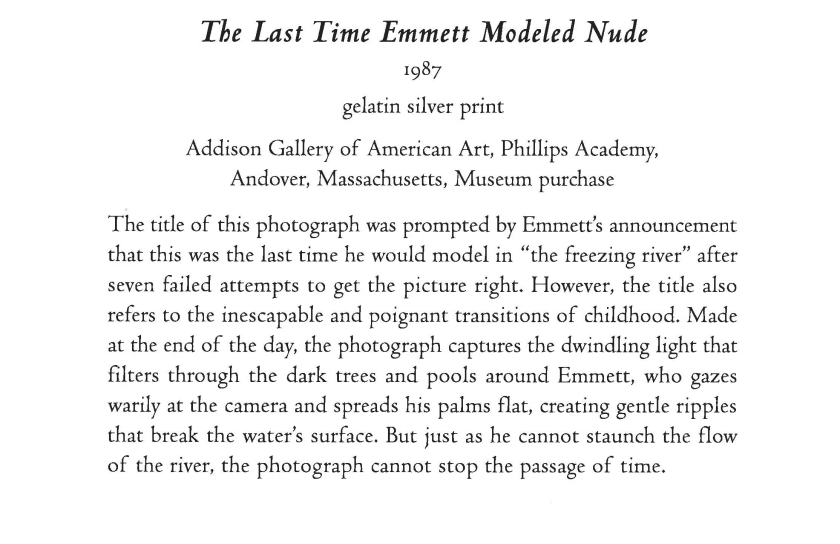



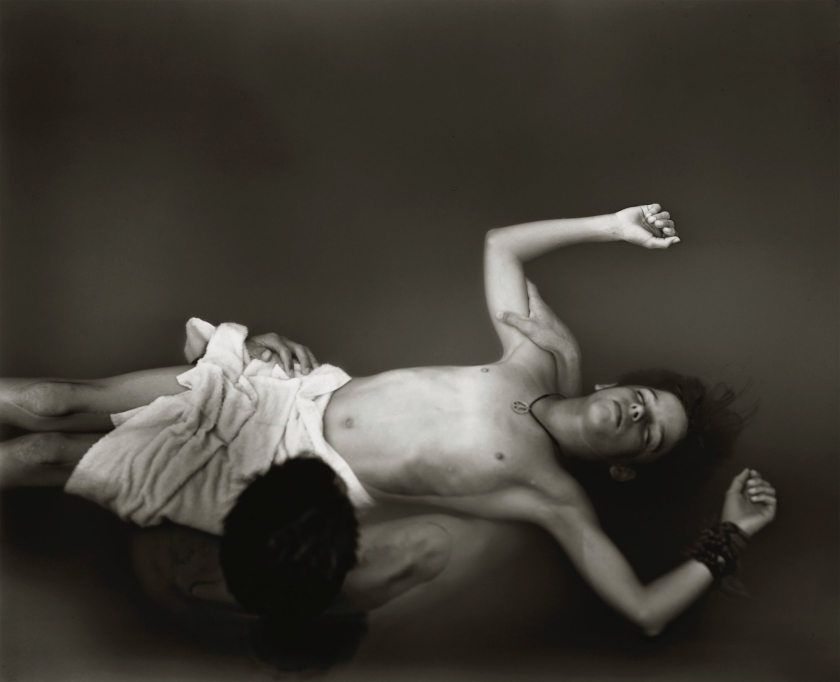




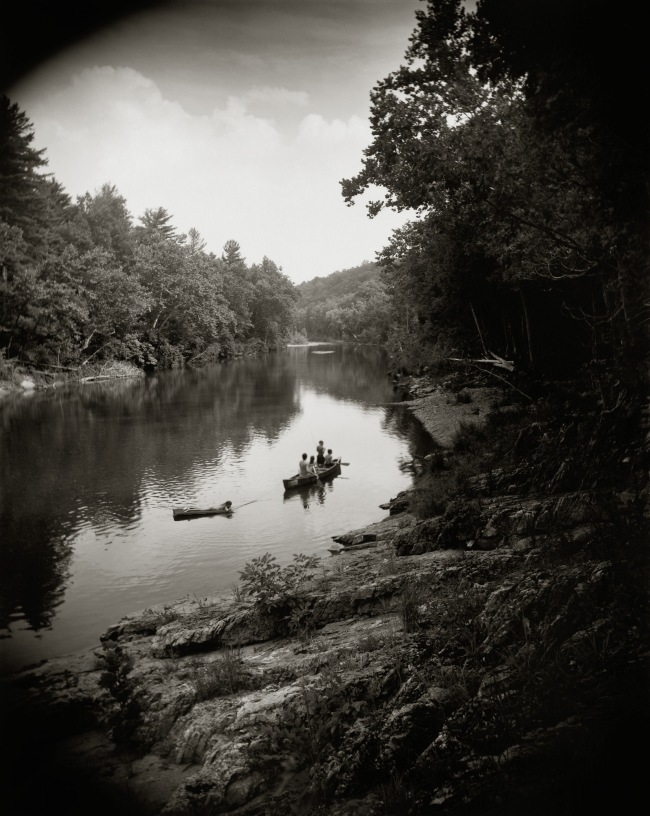
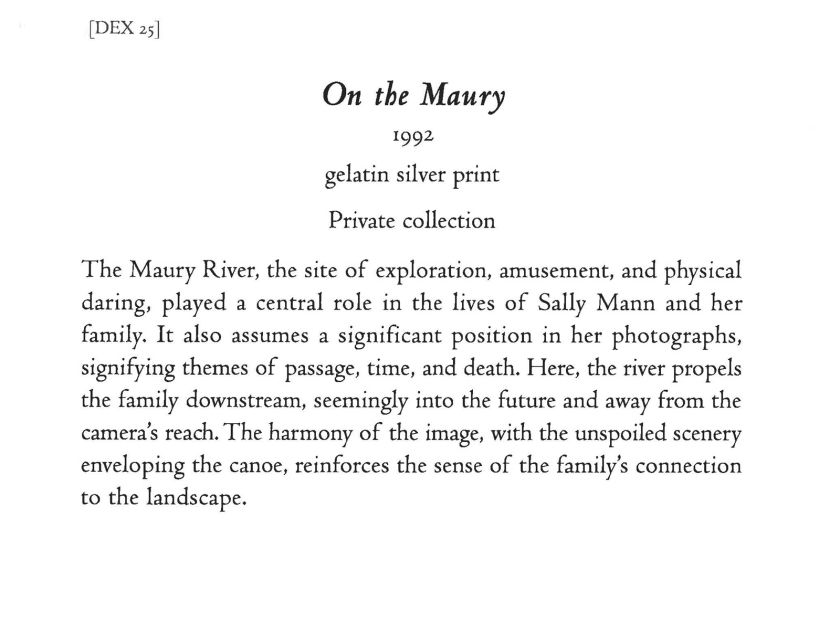
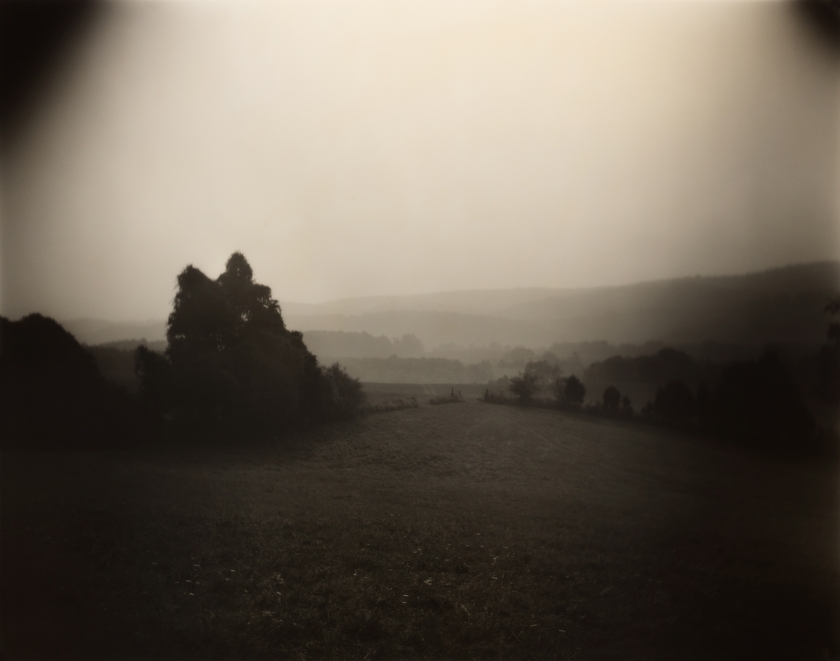


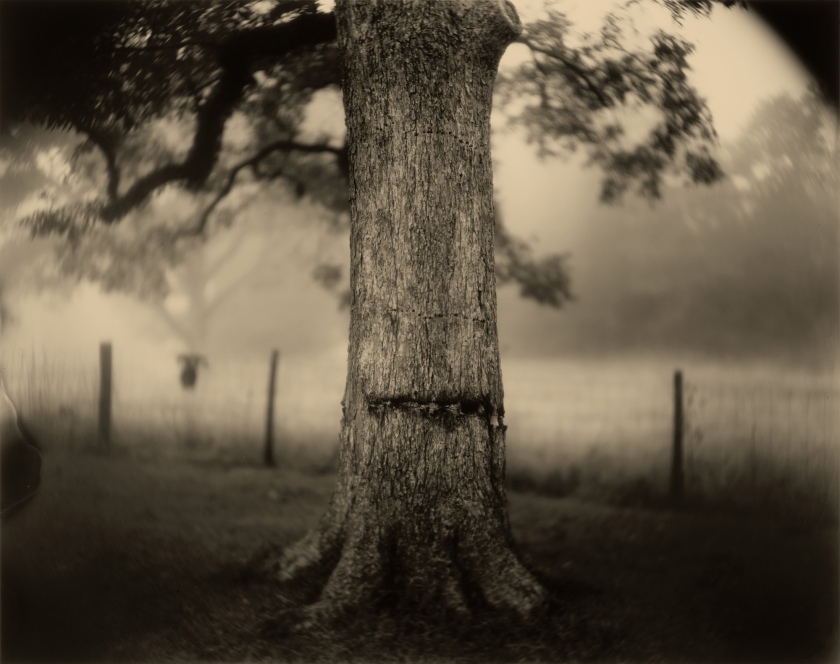

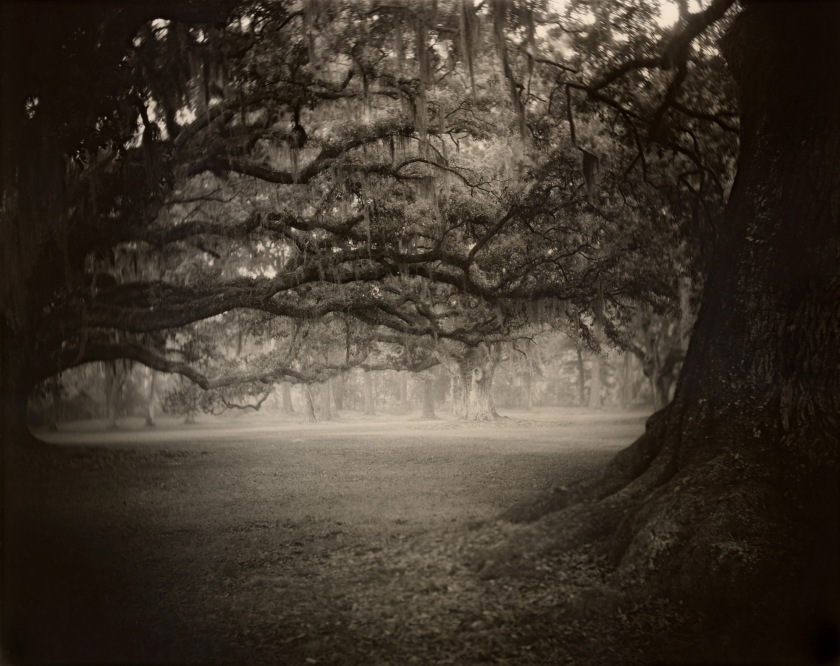

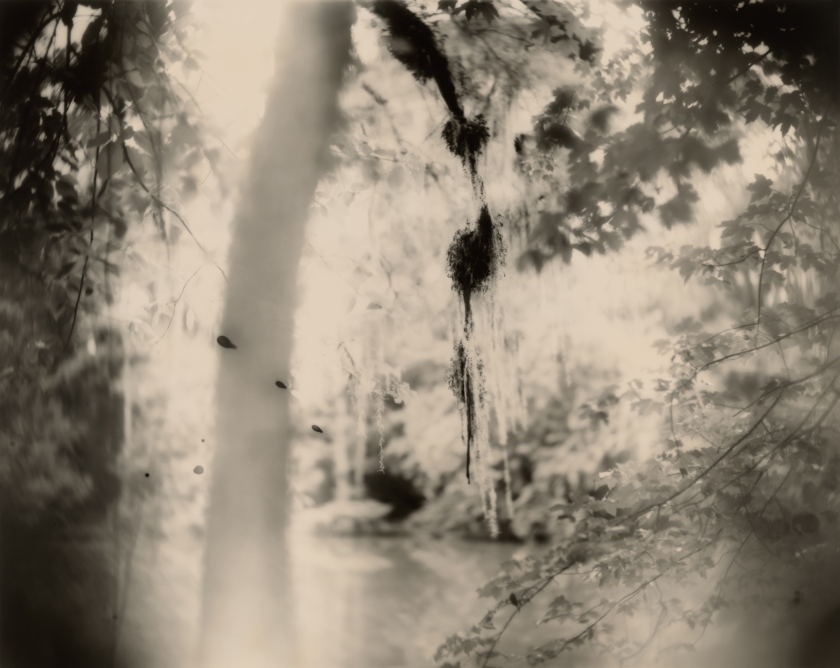



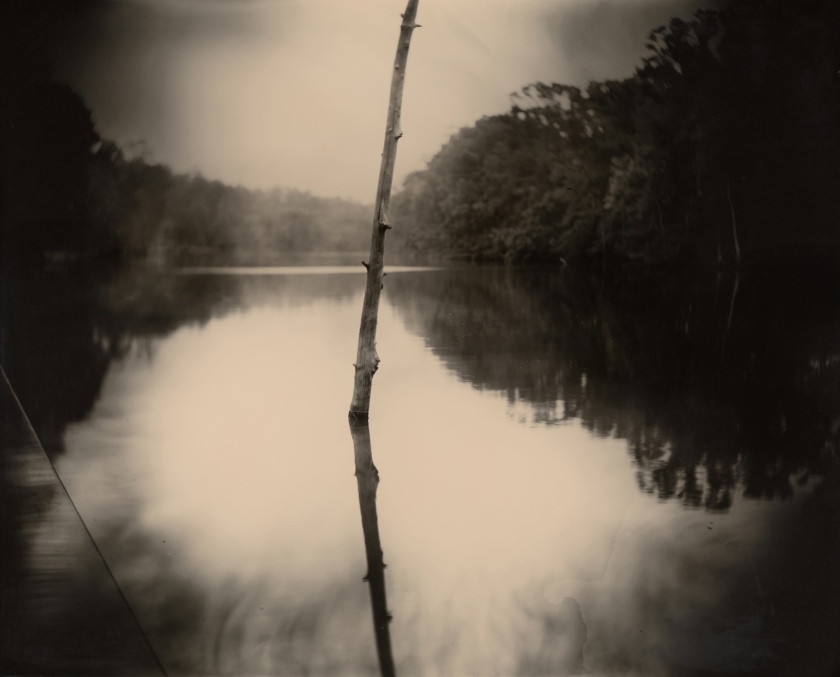
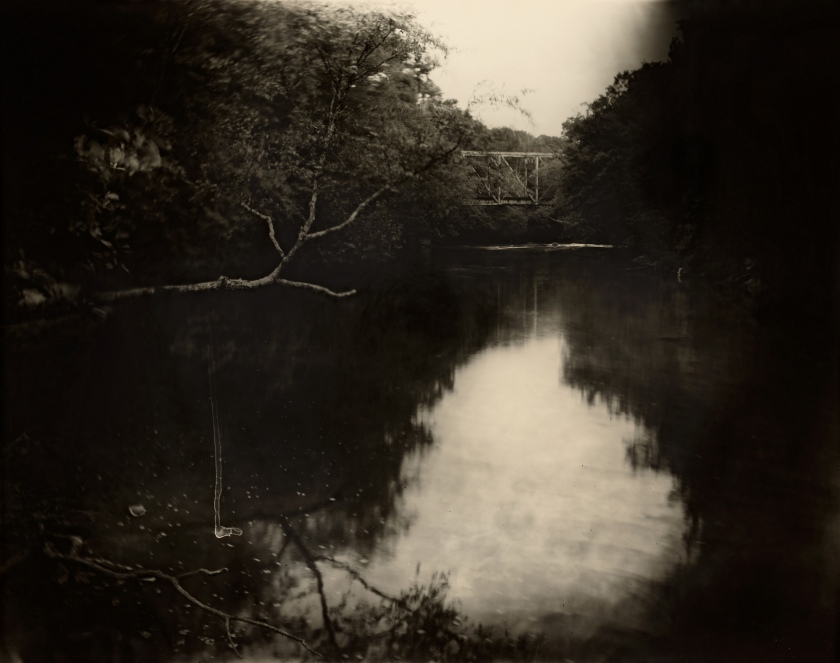
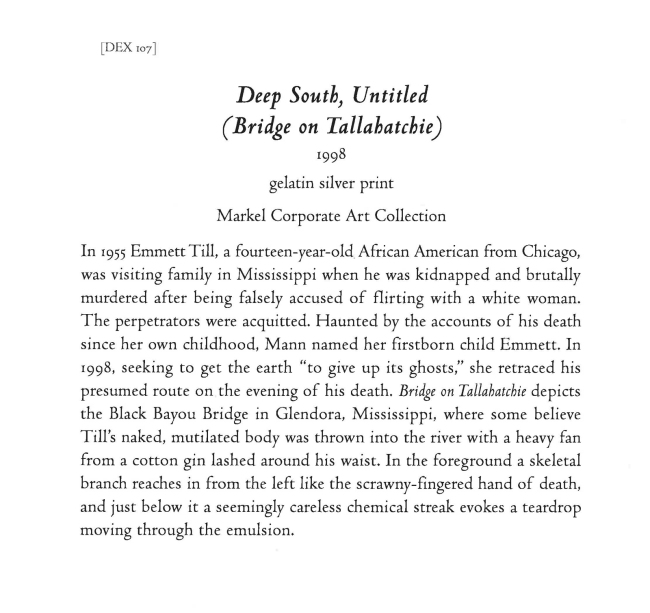
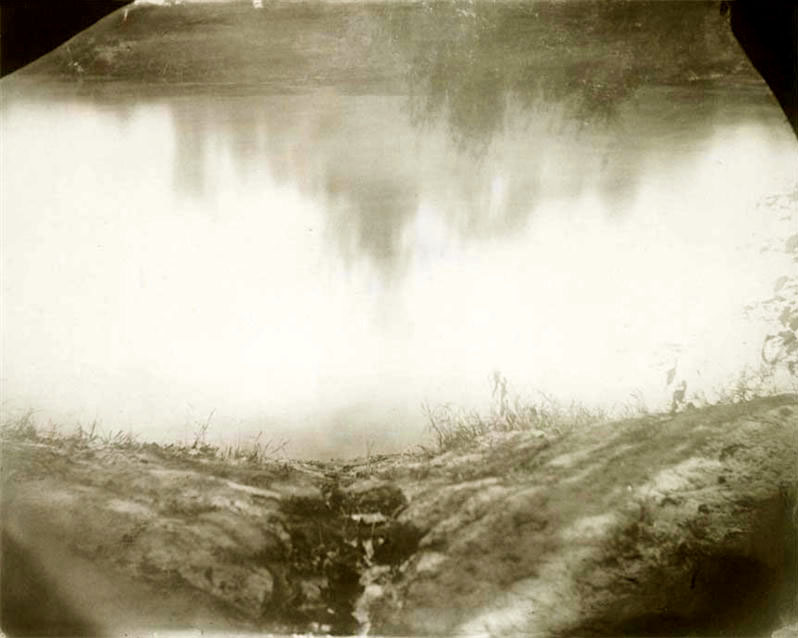
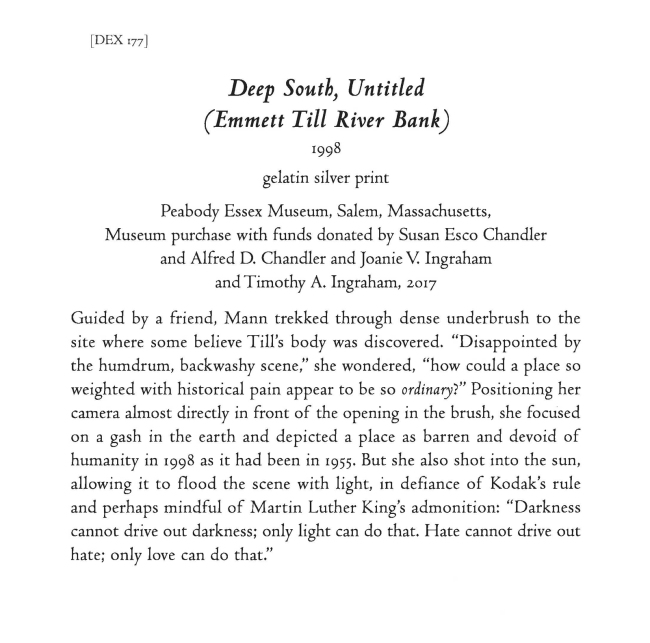
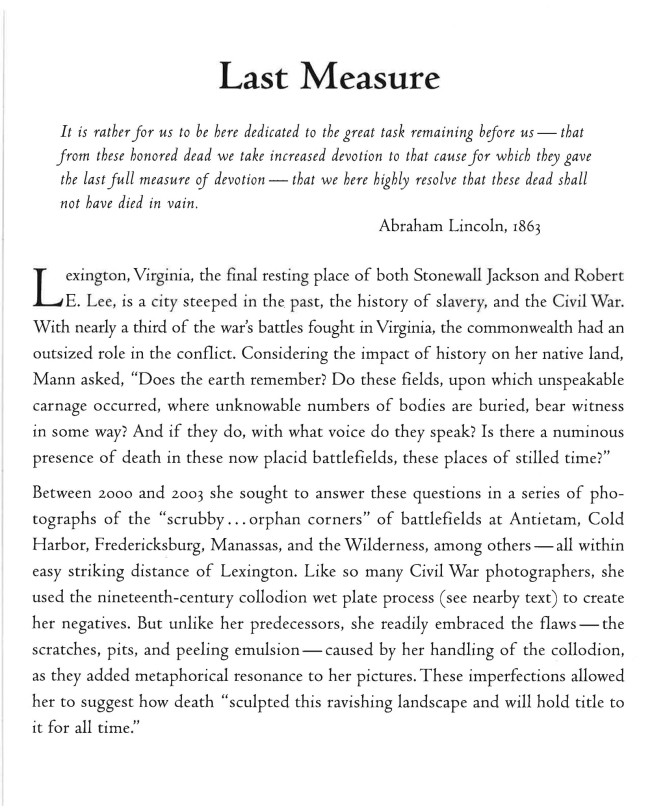



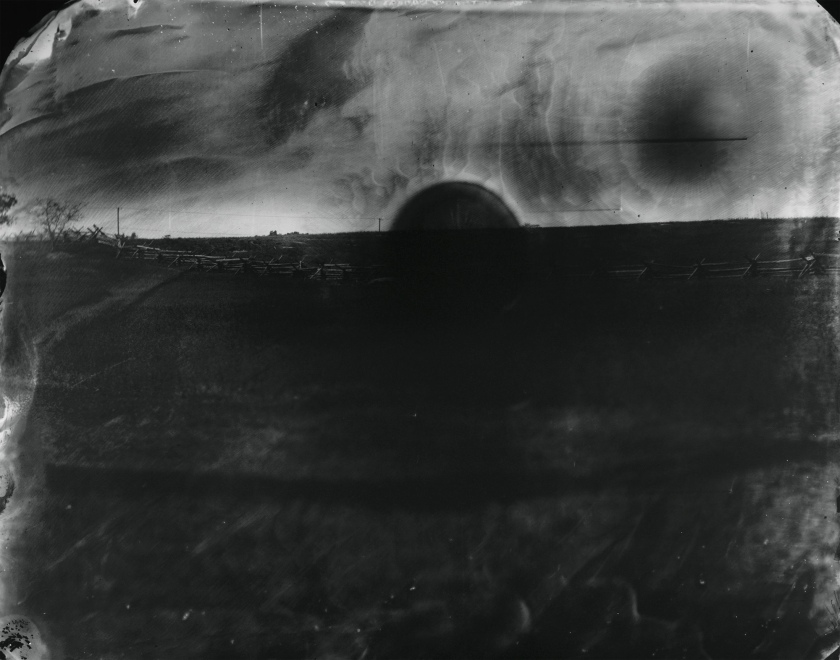
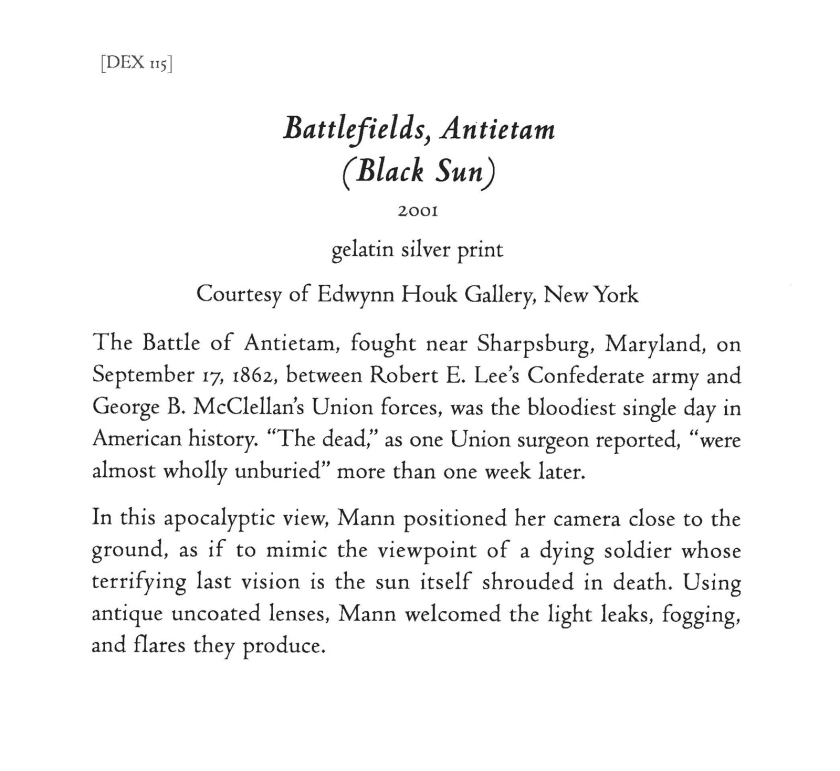


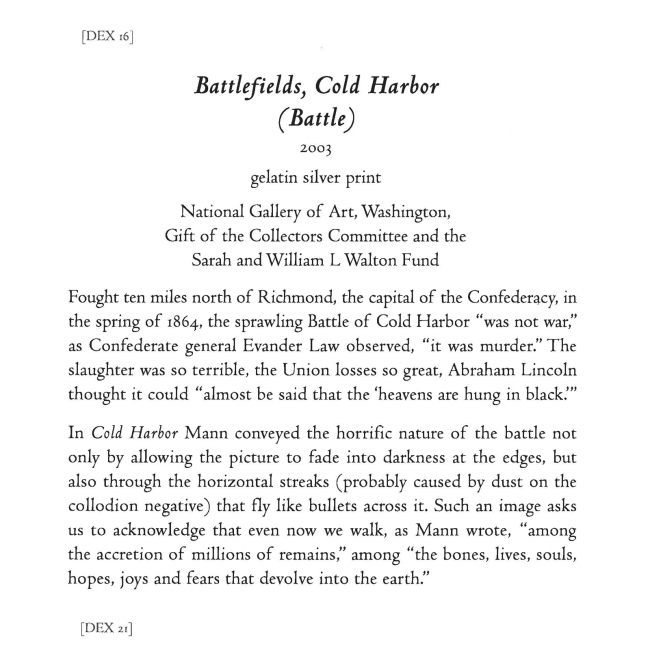
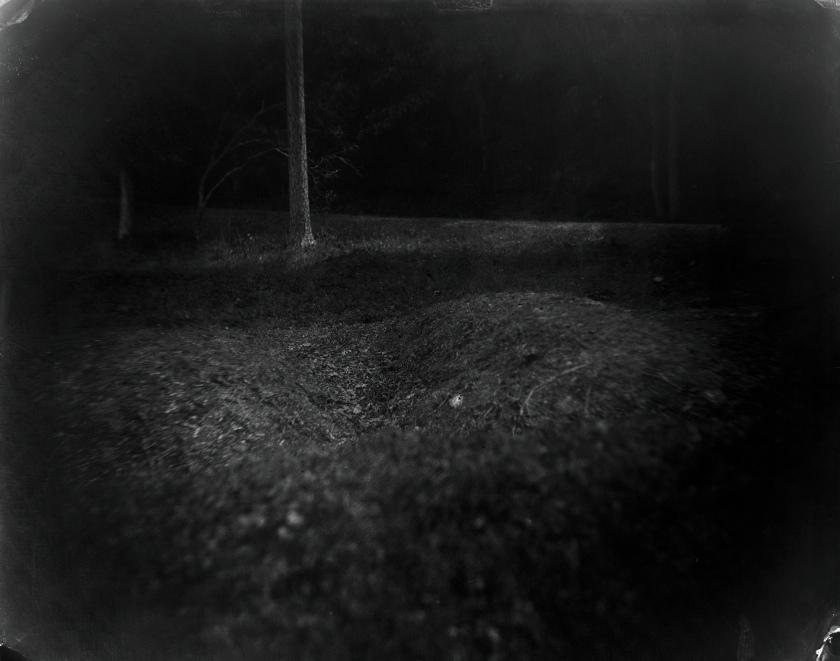

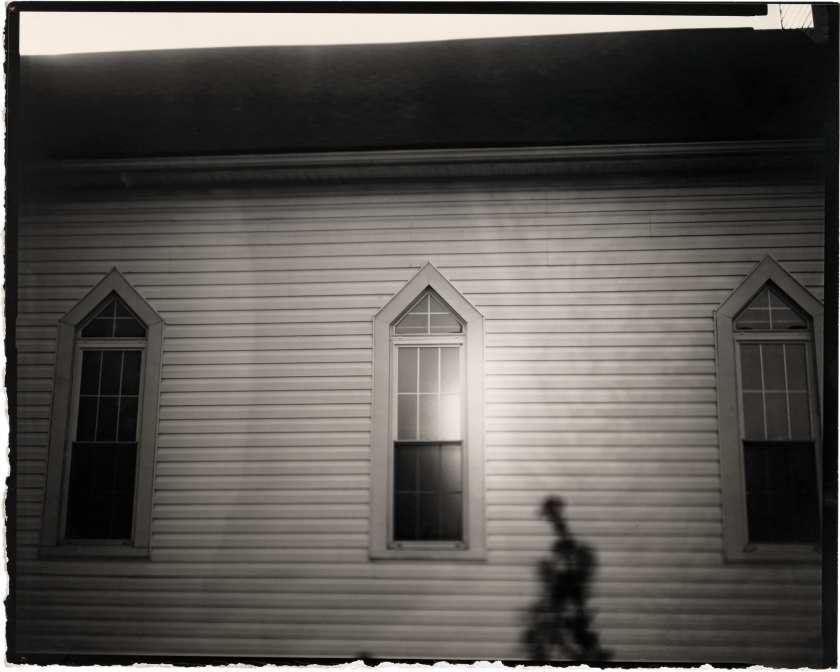
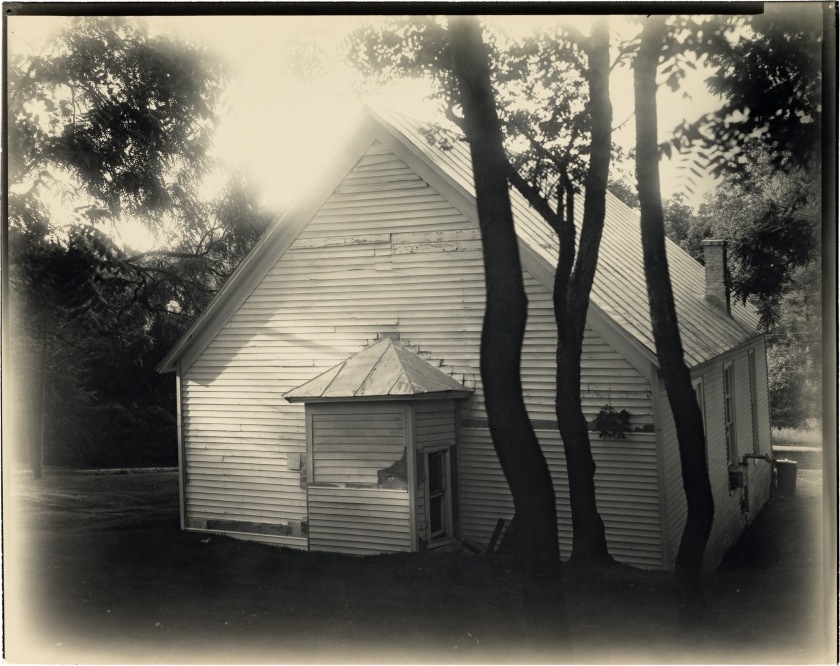
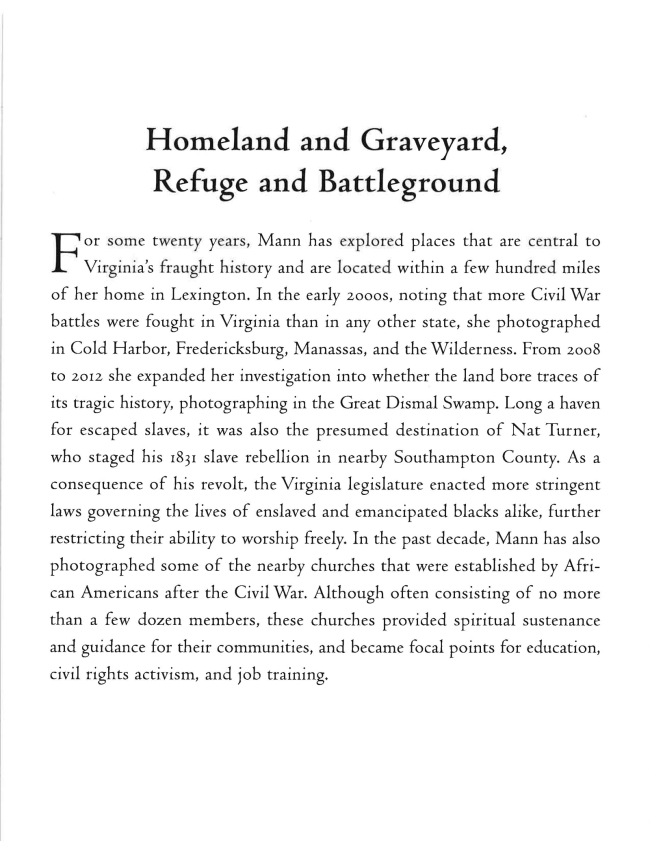
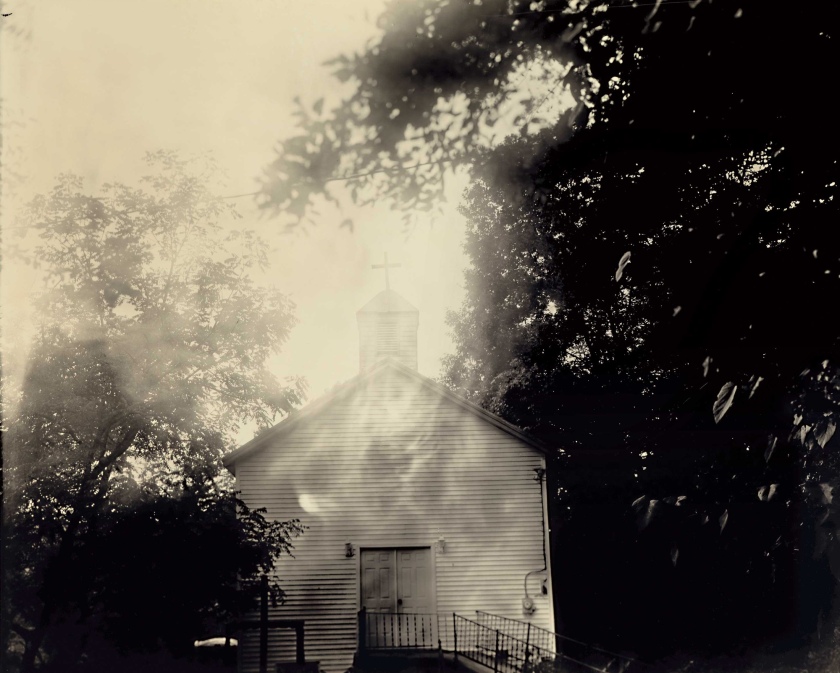


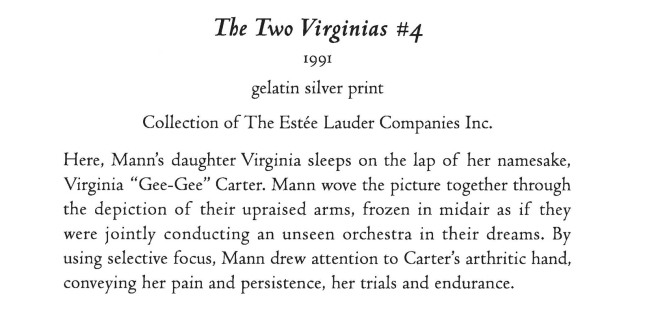
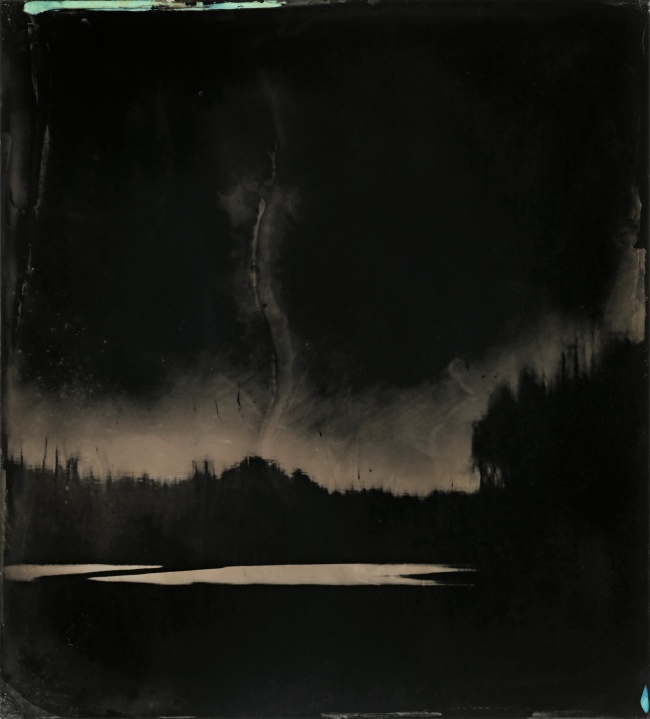
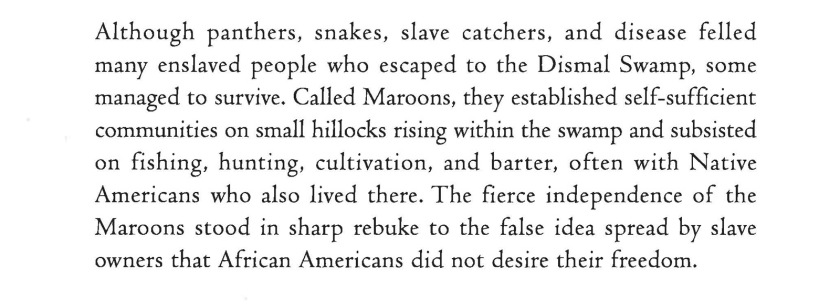
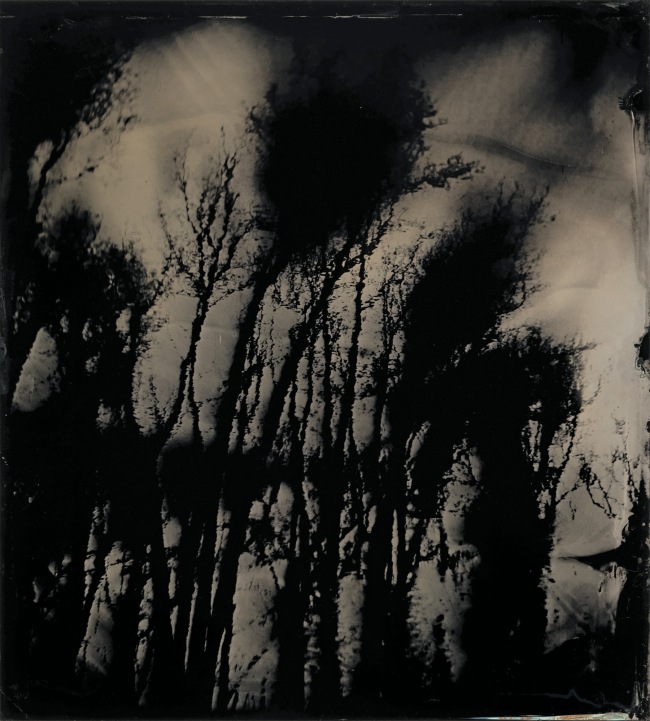
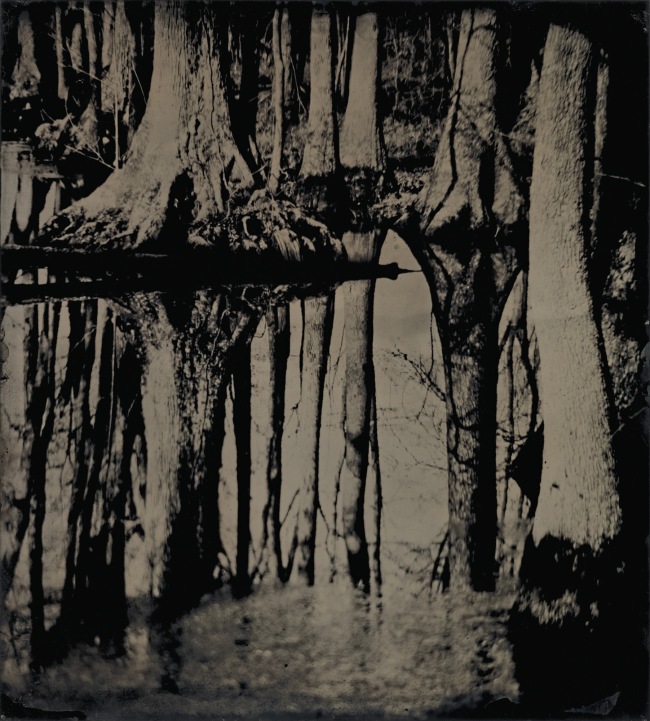


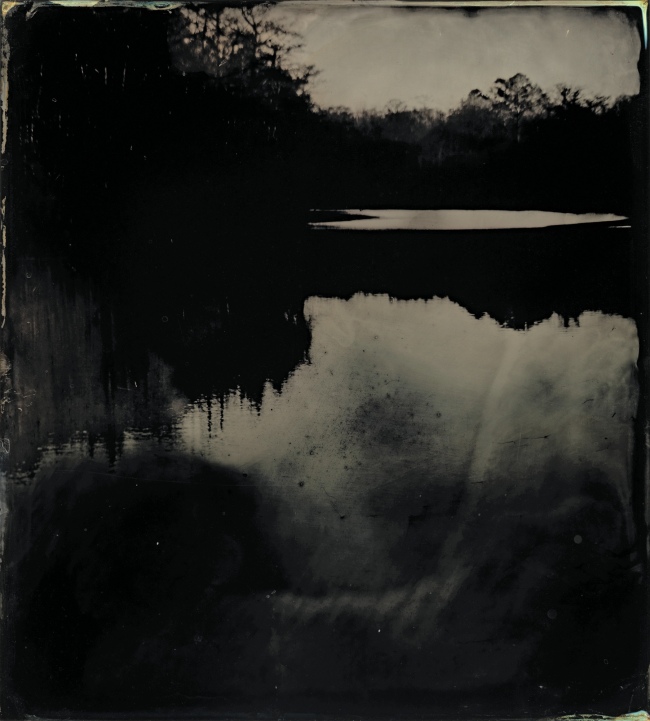
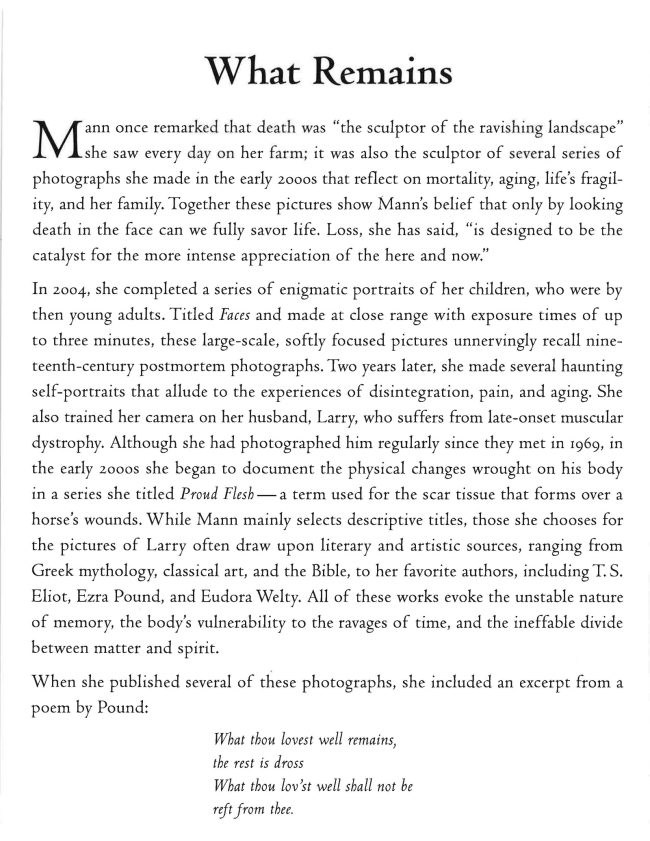

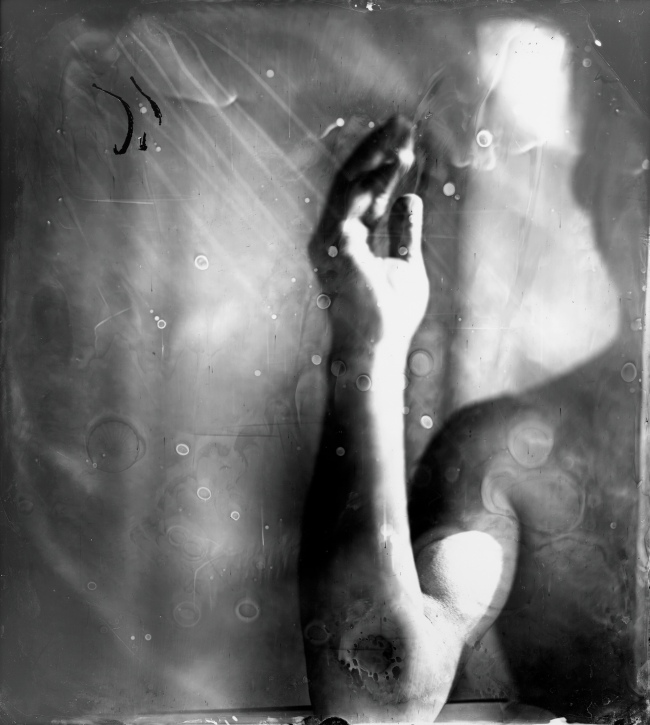
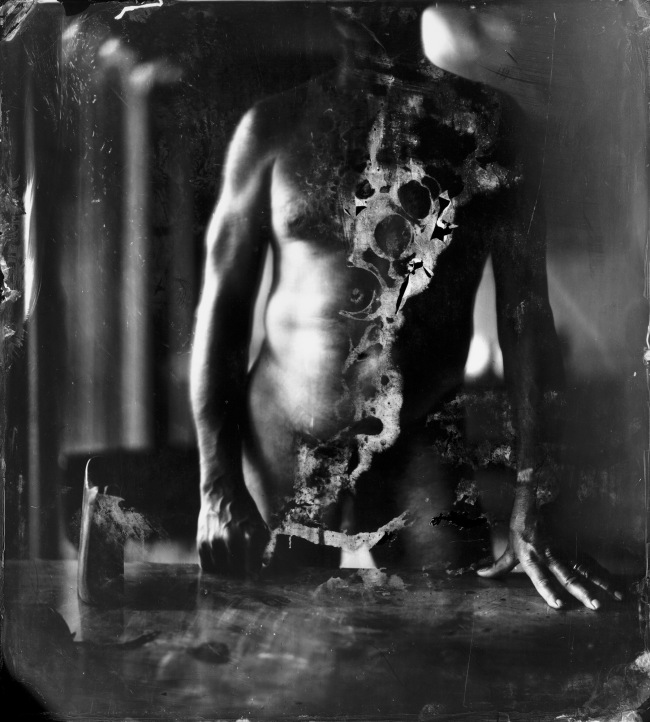
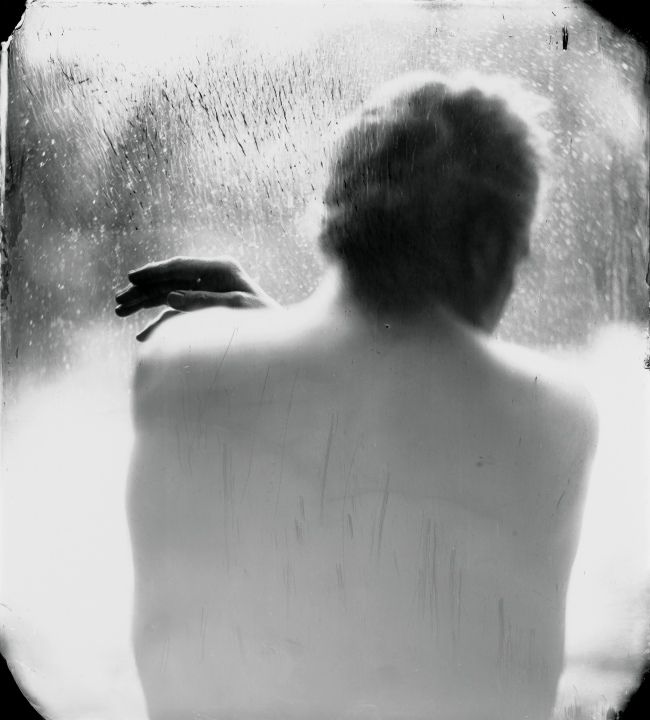
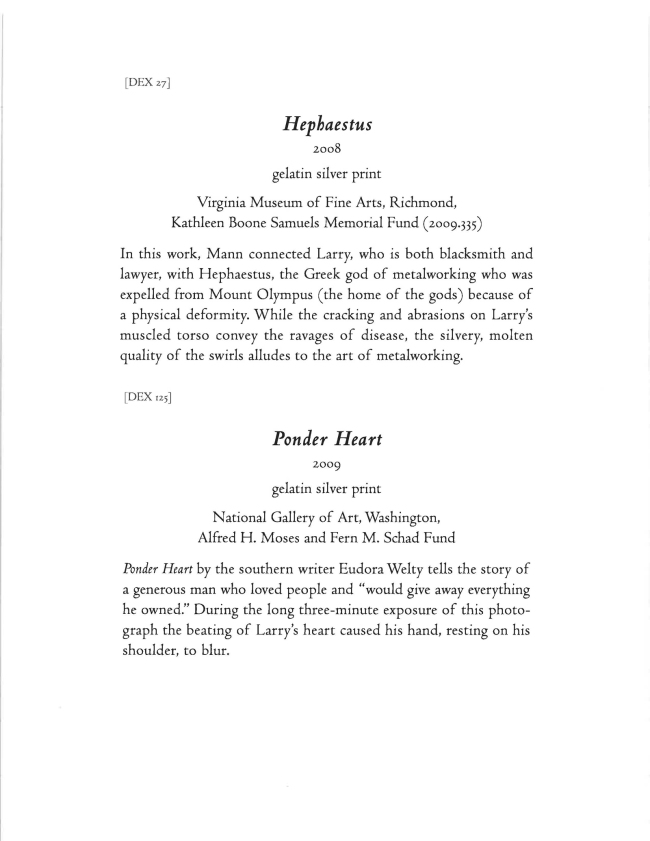
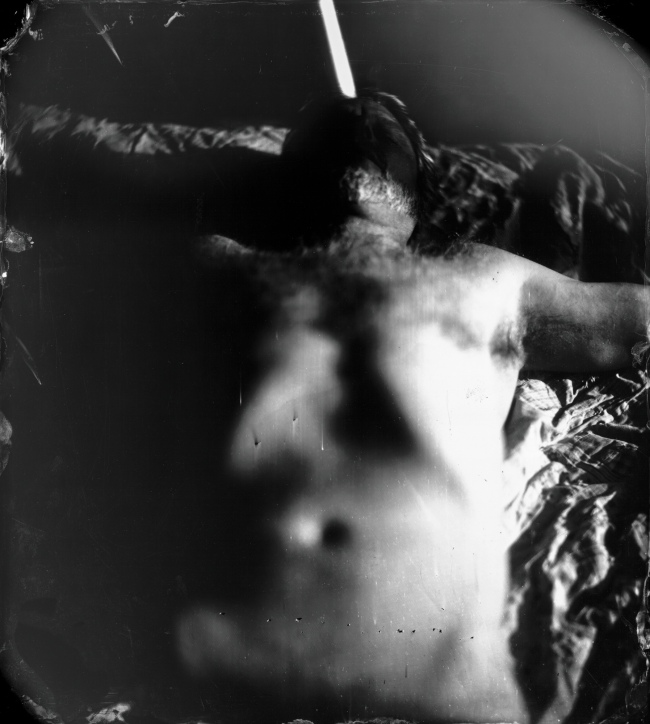
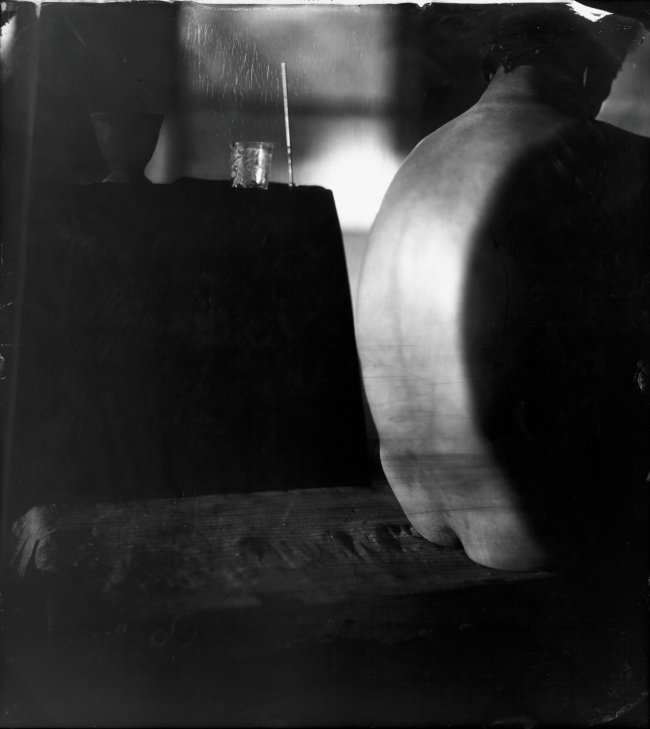
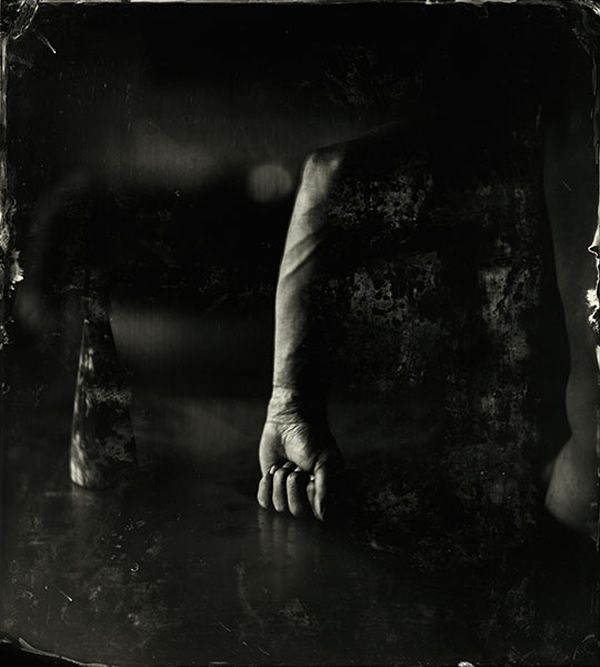

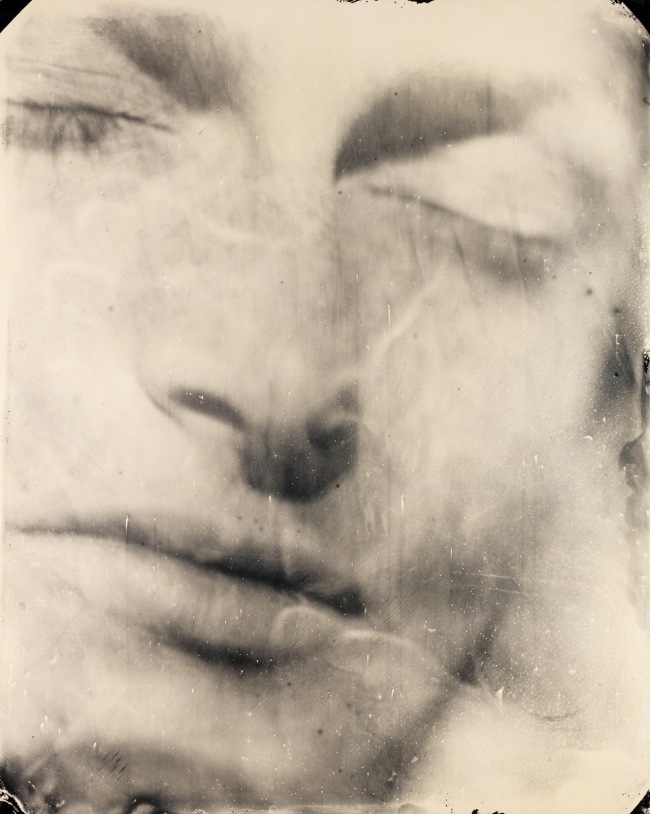
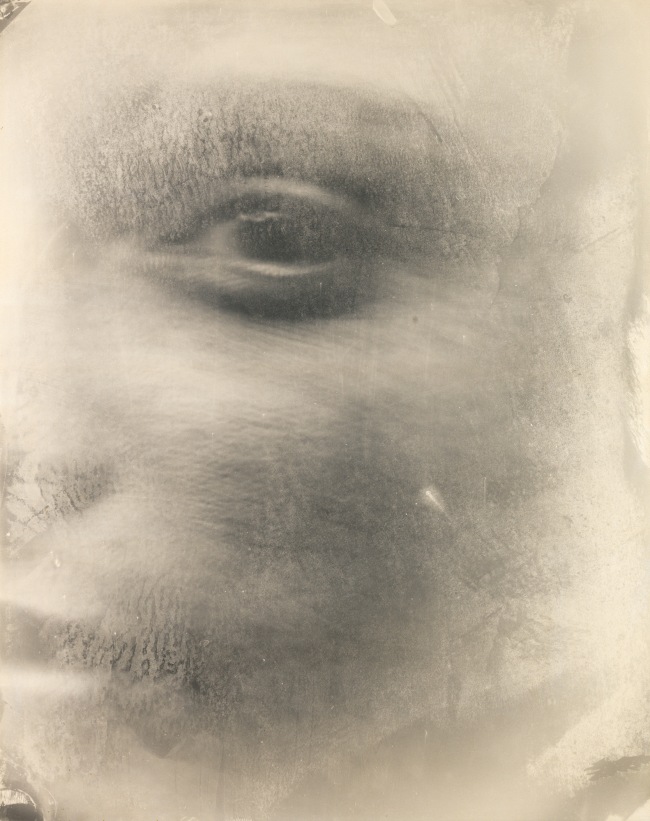


















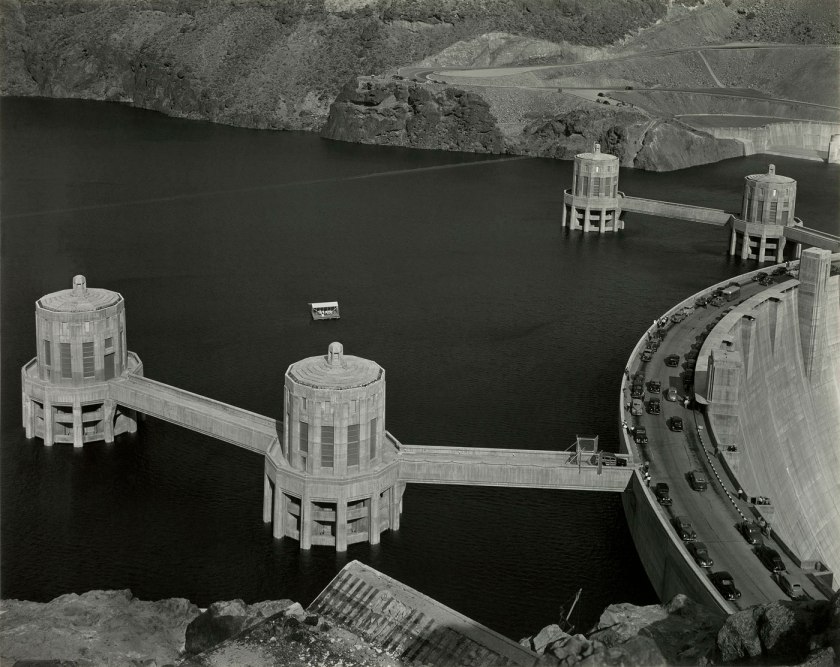
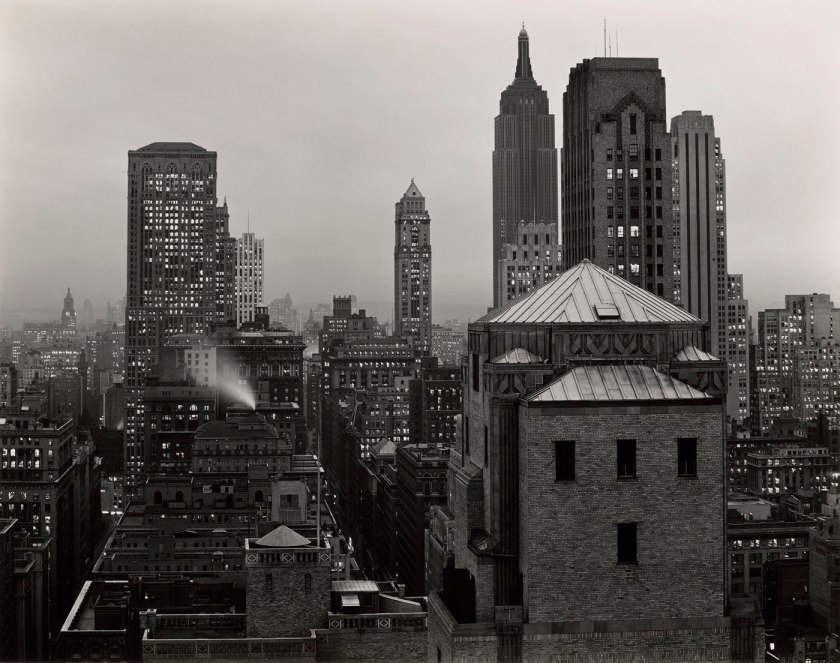
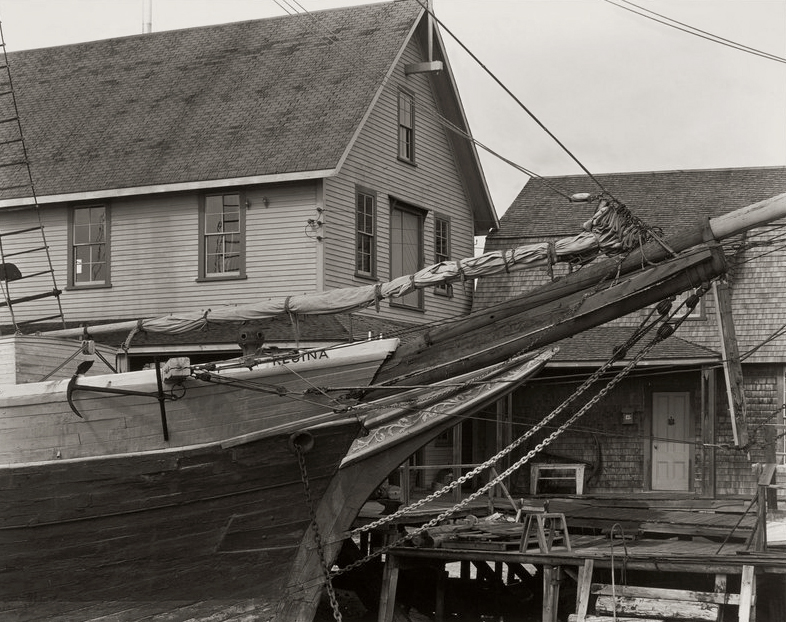
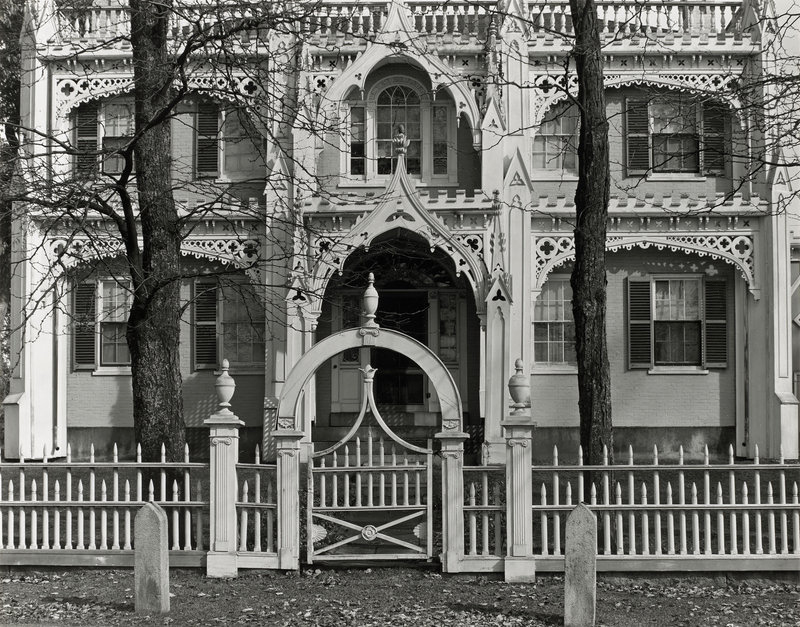
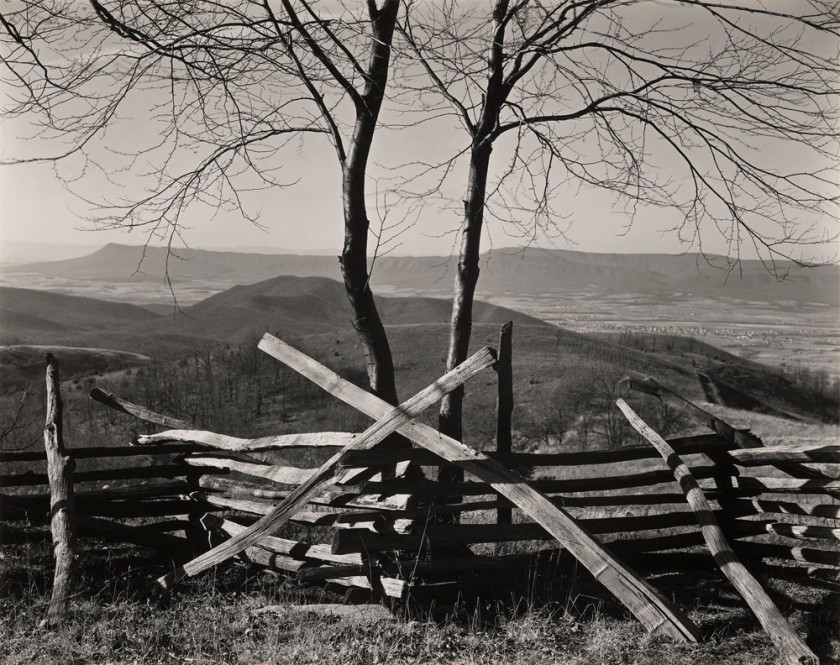
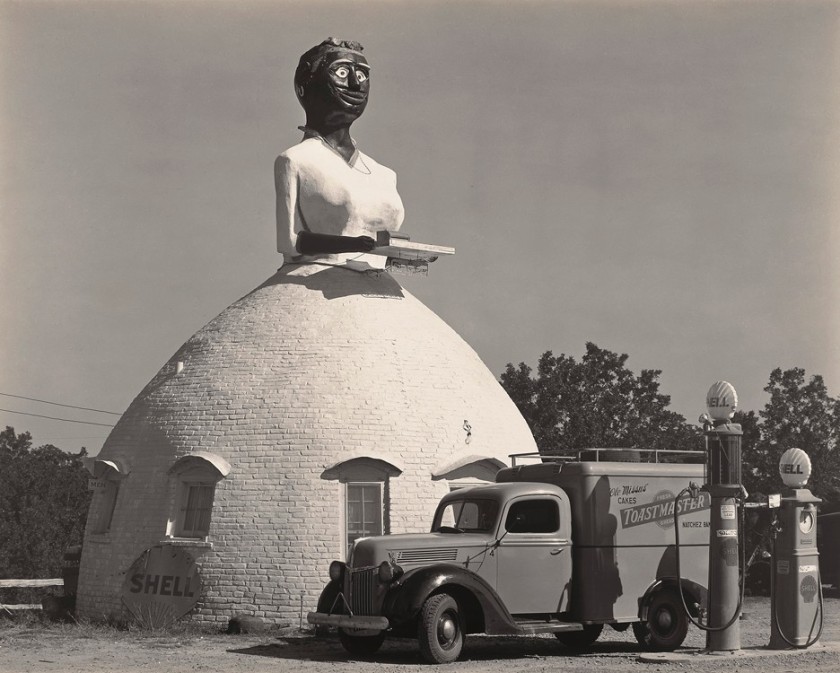
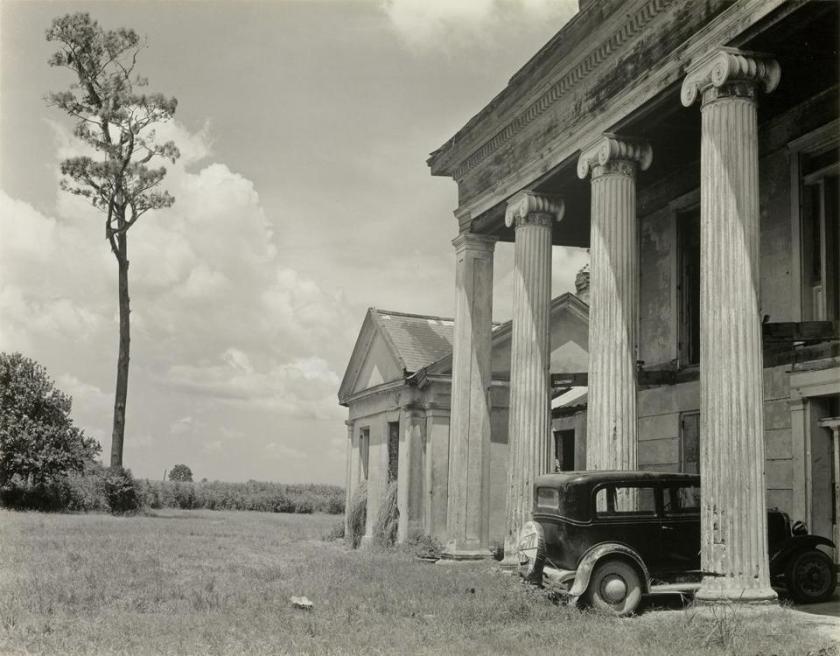
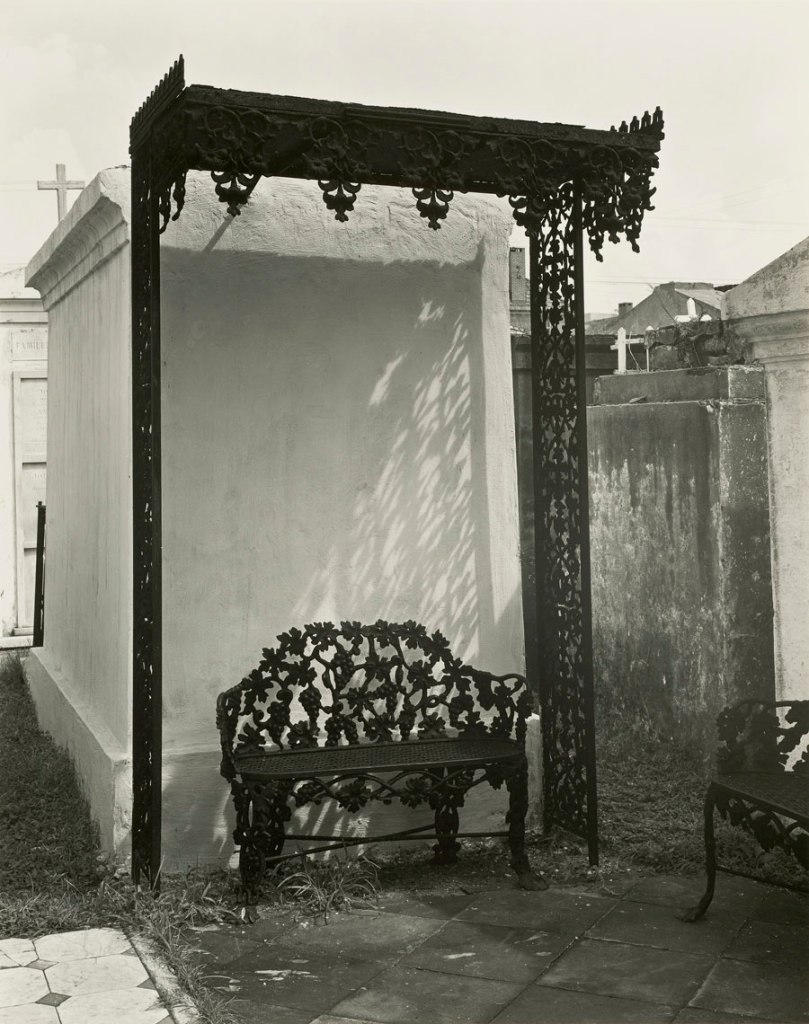

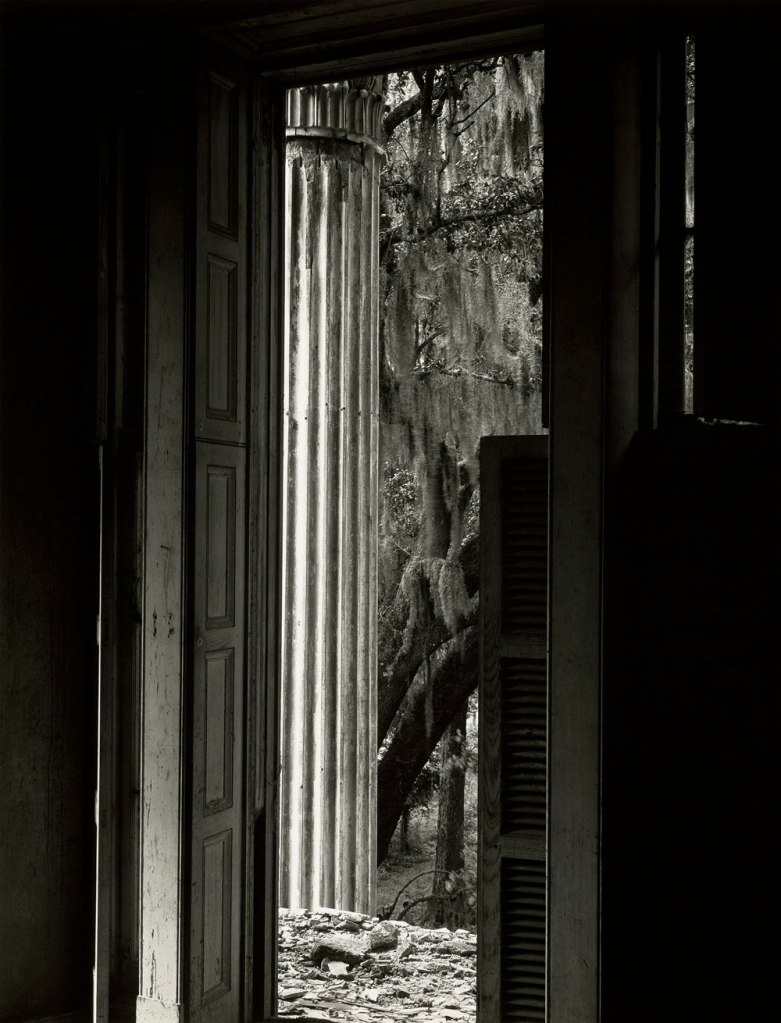
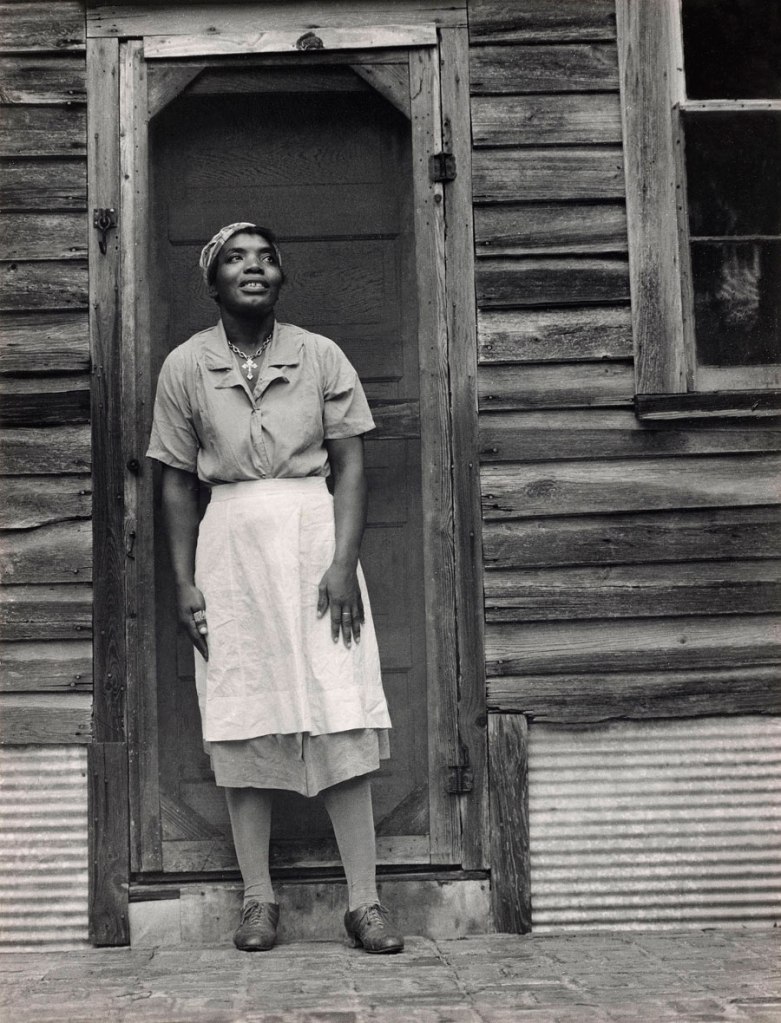
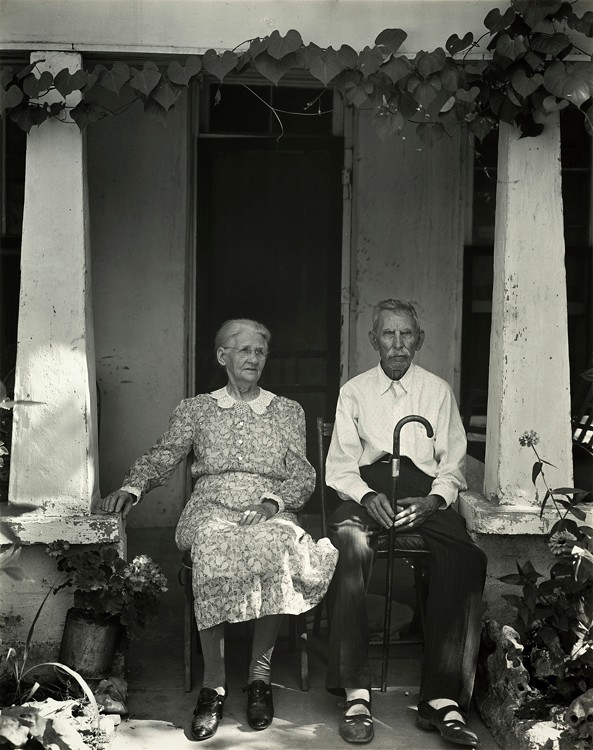

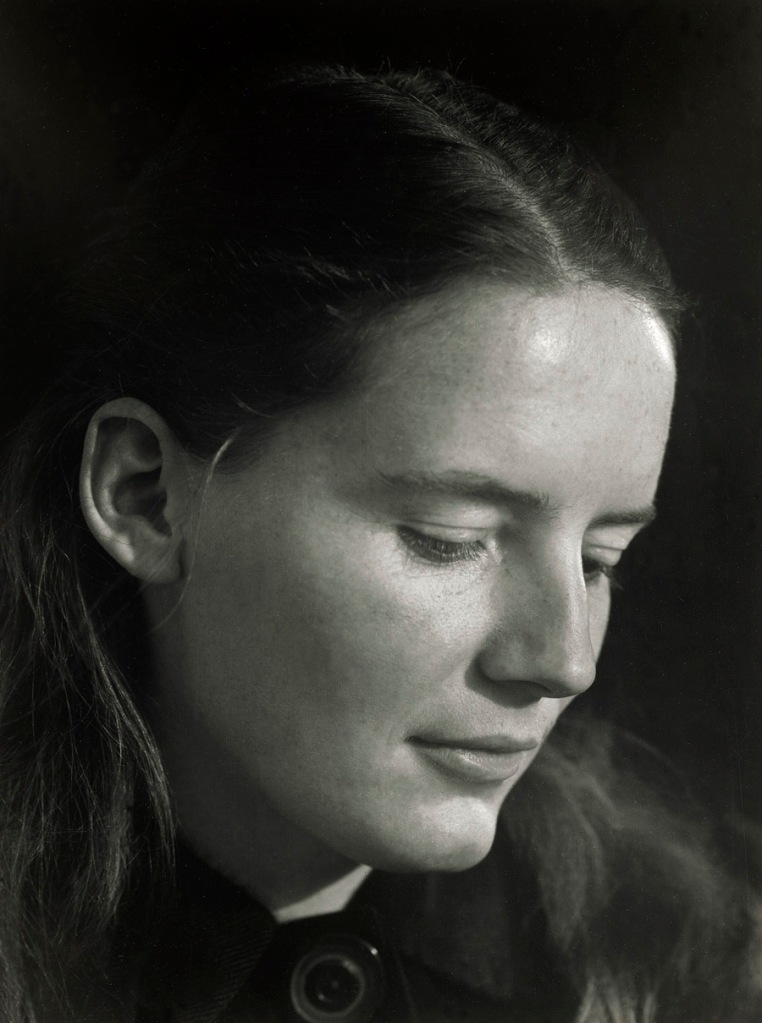





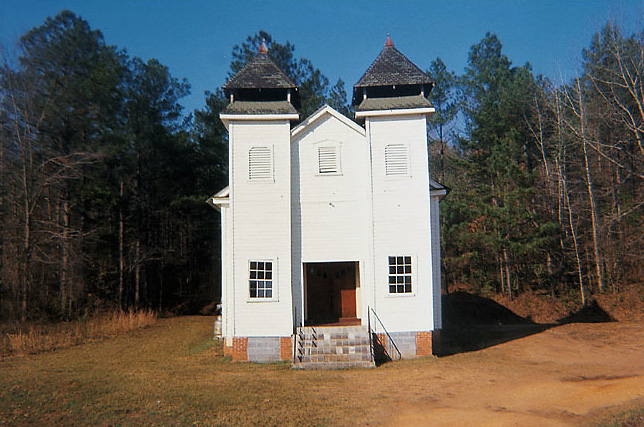




You must be logged in to post a comment.